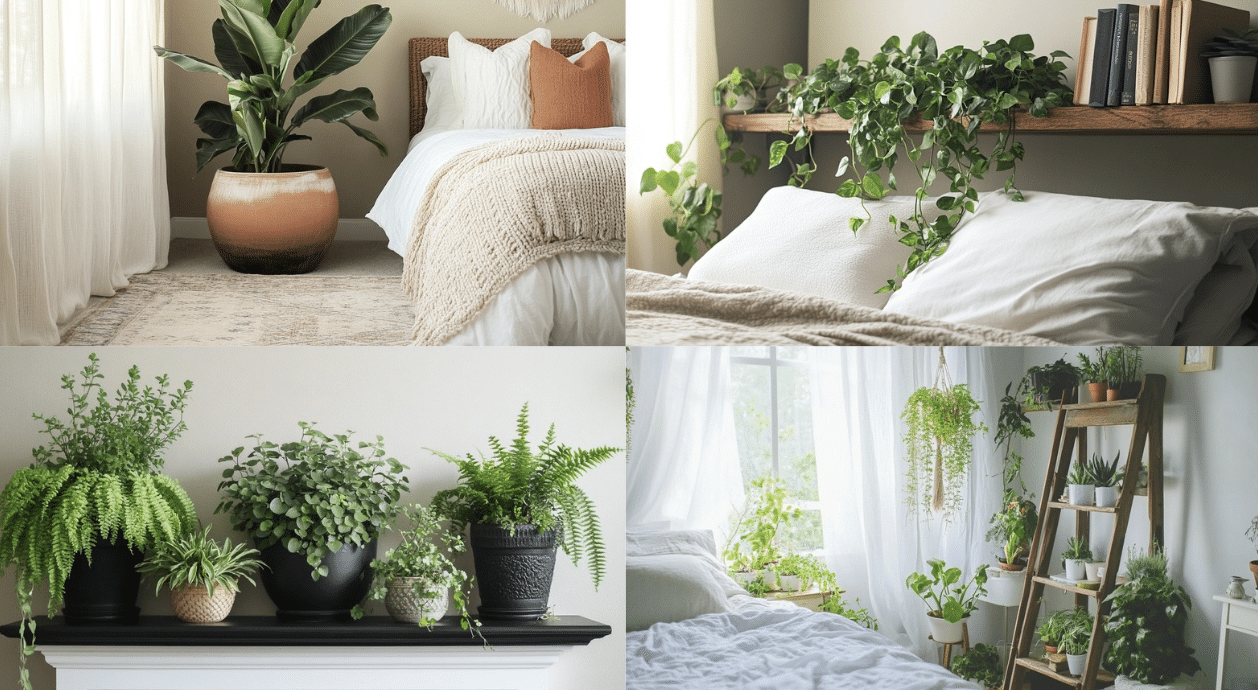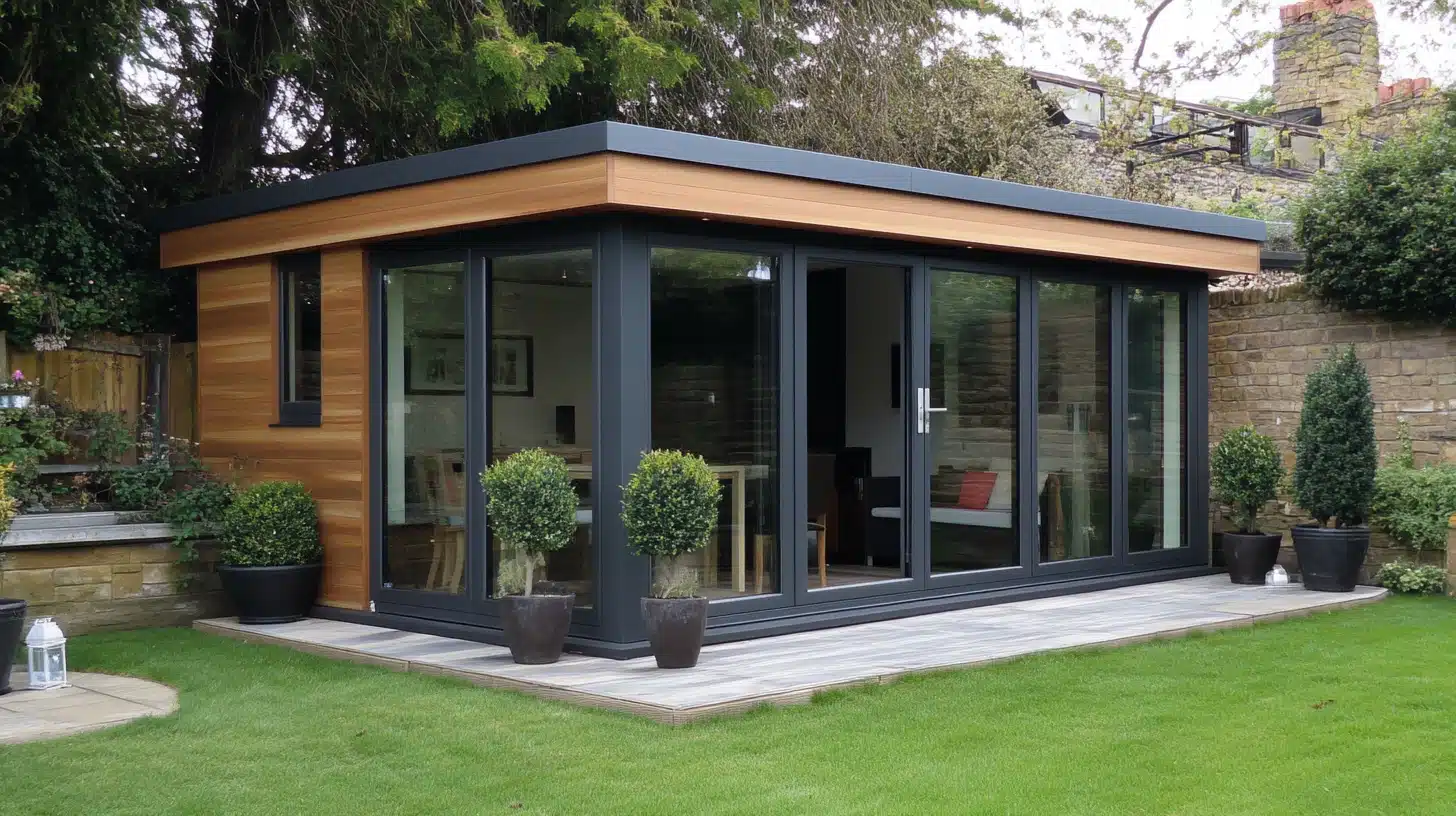Transform Your Bedroom with Low-Maintenance Indoor Plants
We all want a beautiful bedroom, but not everyone has a green thumb. Many of us agree that plants can make a space feel fresh and lively, yet we worry about the time and effort needed to care for them.
Good news! We can help you bring nature into your sleeping area without the hassle.
In this post, we’ll show you how to transform your bedroom with indoor plants that don’t need much attention.
We’ll cover:
- Plants in bedroom display ideas
- How to arrange them for maximum impact
- Best low-maintenance plants for bedrooms
- Tips for keeping plants healthy
Get ready to create a calm, green oasis that will improve your sleep and mood without adding stress to your daily routine.
Why Have Plants in Your Bedroom?
Plants can do wonders for your bedroom. Let’s look at why you should add some greenery to your sleep space:
- Better air quality: Plants naturally clean the air by absorbing toxins and releasing oxygen. This can help you breathe easier while you sleep.
- Improved sleep: Some plants, like lavender and jasmine, give off calming scents that may help you relax and sleep better.
- Reduced stress: Being around plants can lower your stress levels. It’s like having a mini nature retreat right in your room.
- Increased humidity: Plants release moisture into the air, which can be great for your skin and respiratory system, especially in dry climates.
- Natural decor: Plants add life and color to your room without the need for fancy decorations. They’re a simple way to spruce up your space.
- Mood booster: Seeing and caring for plants can make you feel happier and more positive, even if you’re not a plant expert.
23 Creative Ways to Decorate Your Bedroom with Plants
Let’s look at some fun and easy ways to bring plants into your sleep space. These ideas will help you create a cozy, green retreat without much fuss.
1. Create a Cozy Corner
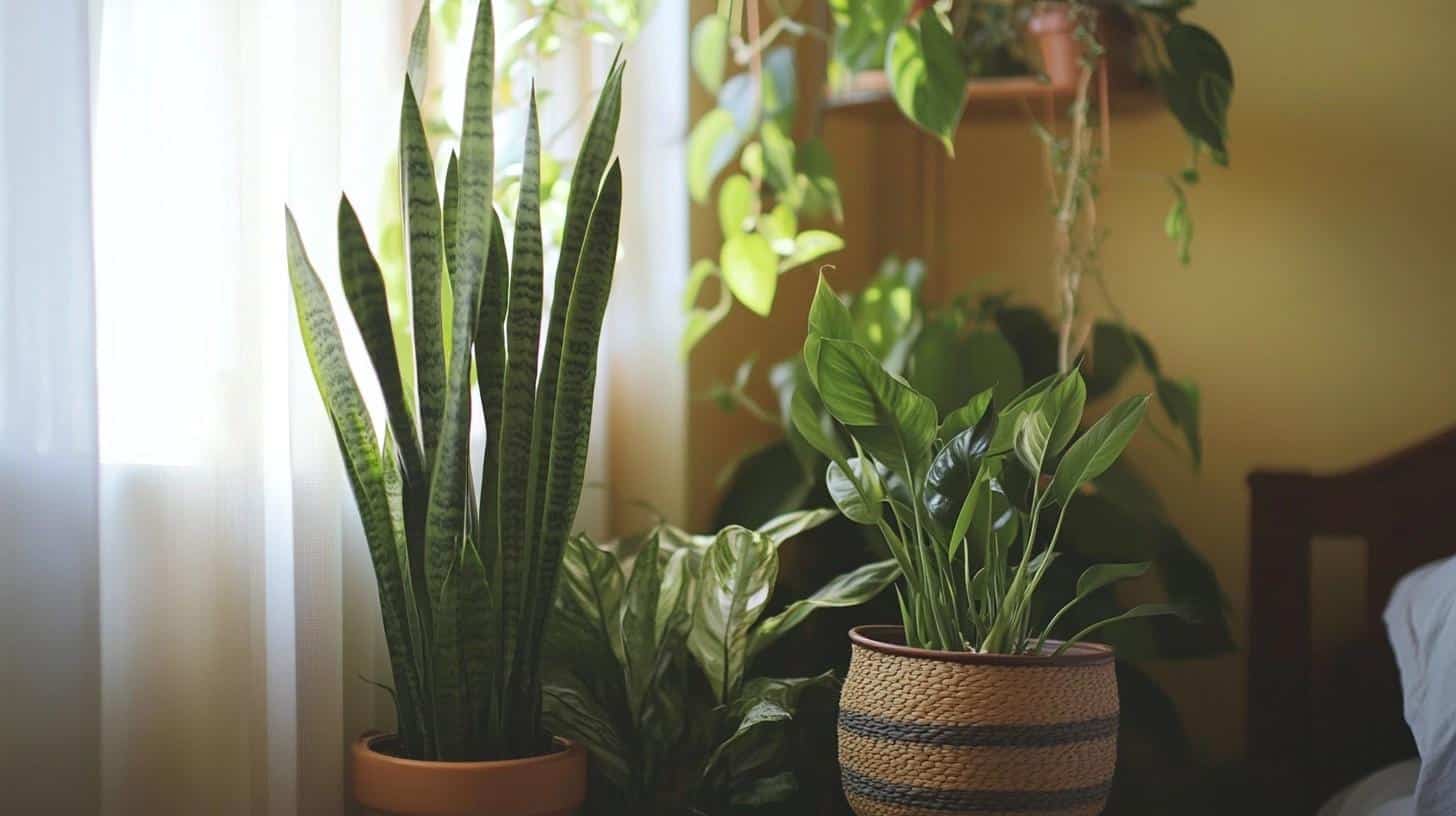
Transform an unused corner of your bedroom into a relaxing green space. Use various plant sizes to add depth and create a natural vibe.
- Recommended Plants: Tall snake plant, small peace lily, trailing pothos.
- How to arrange them for maximum impact: Place the tall plant in the back, smaller plants at the front, and hang trailing plants above.
- Seasonal Styling Ideas: Swap pots for warmer or cooler colors to match the seasons.
2. Use a Hanging Rack
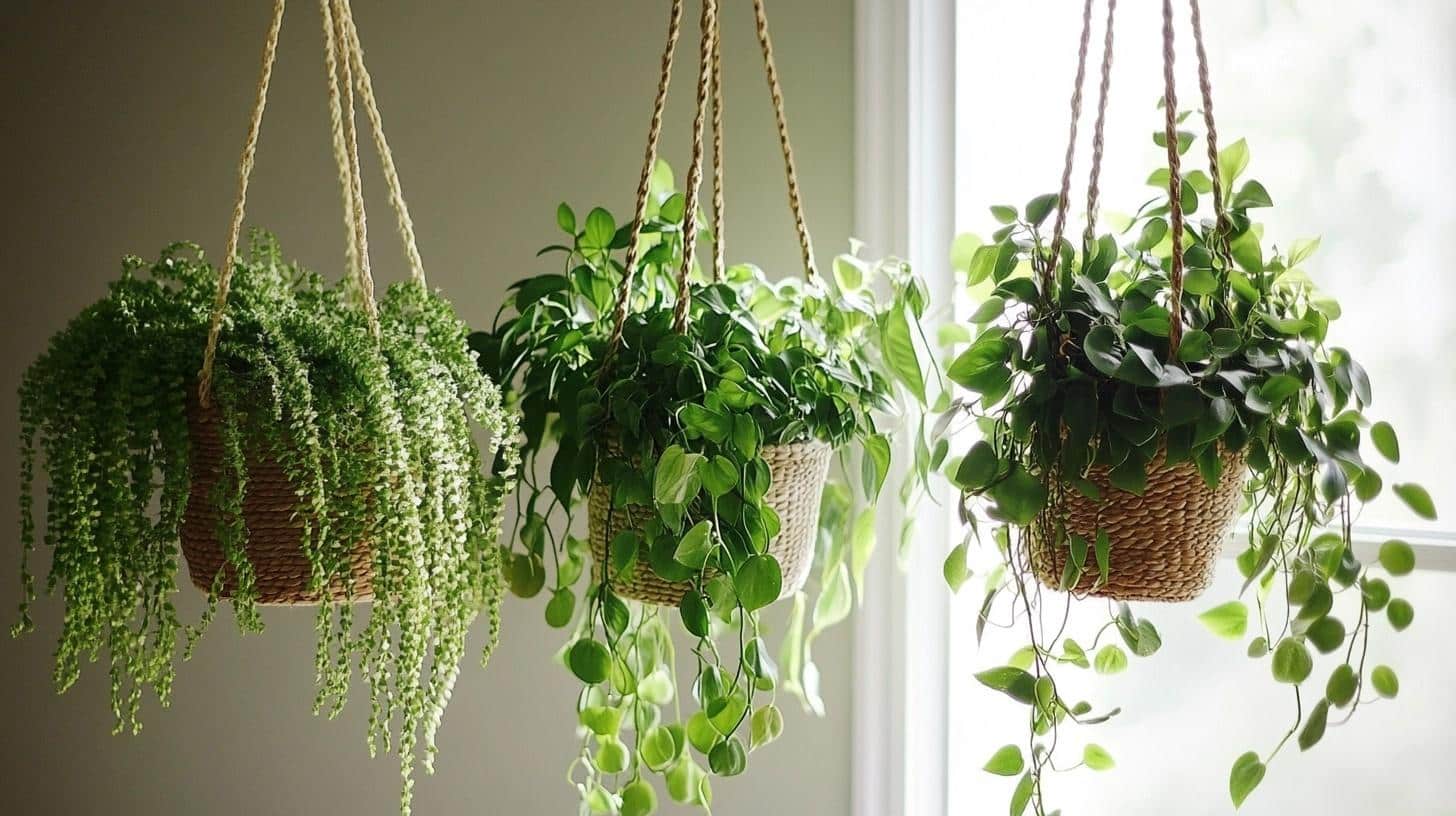
Maximize floor space by installing a hanging plant rack. This adds height to the room and brings greenery closer to eye level.
- Recommended Plants: Boston fern, string of pearls, pothos.
- How to arrange them for maximum impact: Arrange trailing plants in the middle and place fuller plants at the ends.
- Seasonal Styling Ideas: Add seasonal decorations like mini ornaments during holidays or change the pot color for seasonal flair.
3. Add a Unique Special Shelf
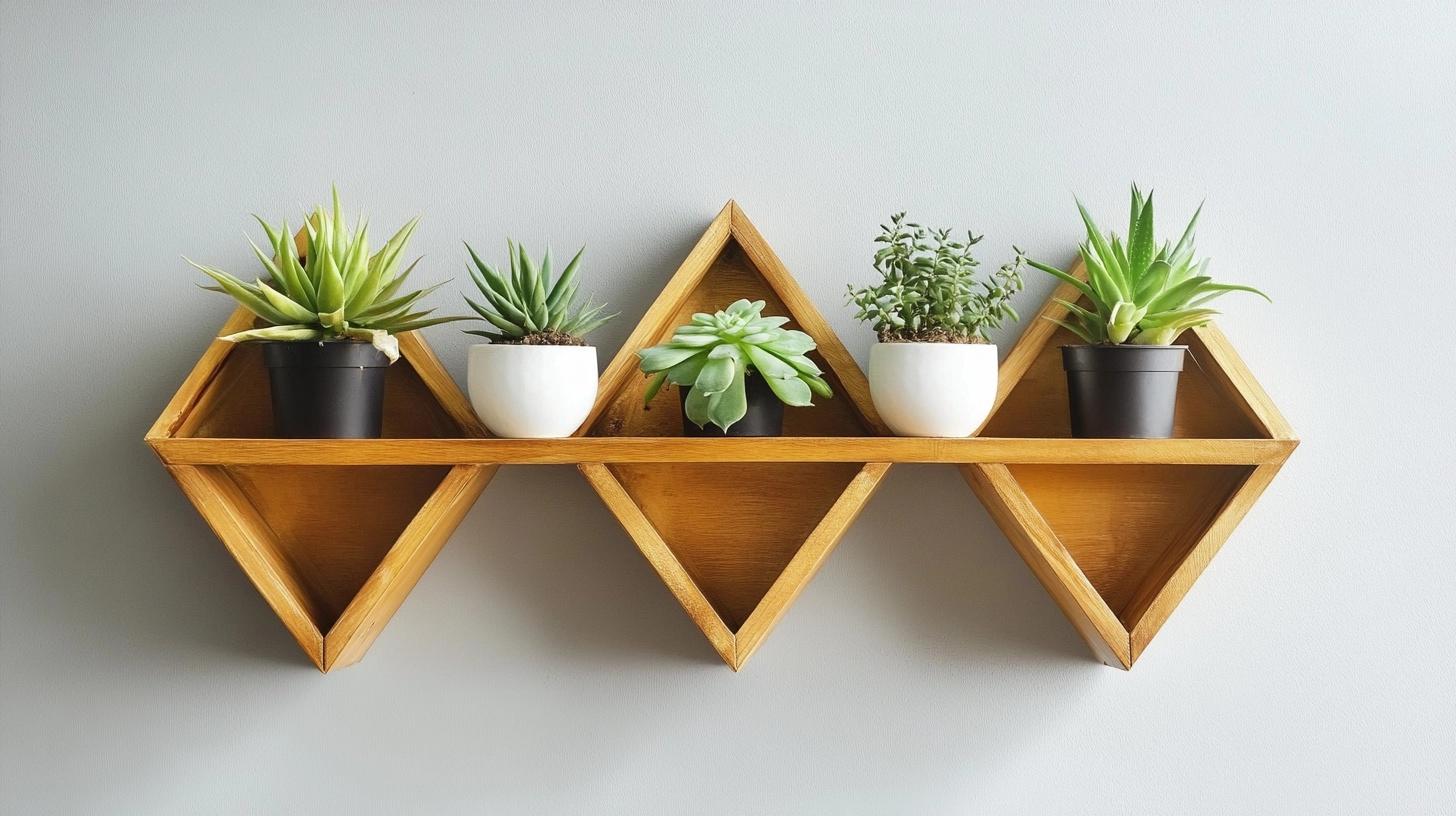
Incorporate a unique shelf design to display plants, turning them into a focal point. This adds style and freshness to your bedroom space.
- Recommended Plants: Succulents, small spider plants, philodendrons.
- How to arrange them for maximum impact: Place larger plants on the ends and smaller ones in the middle for symmetry.
- Seasonal Styling Ideas: Use seasonal pots or swap plant types according to seasonal growth patterns.
4. Use Trailing Plants
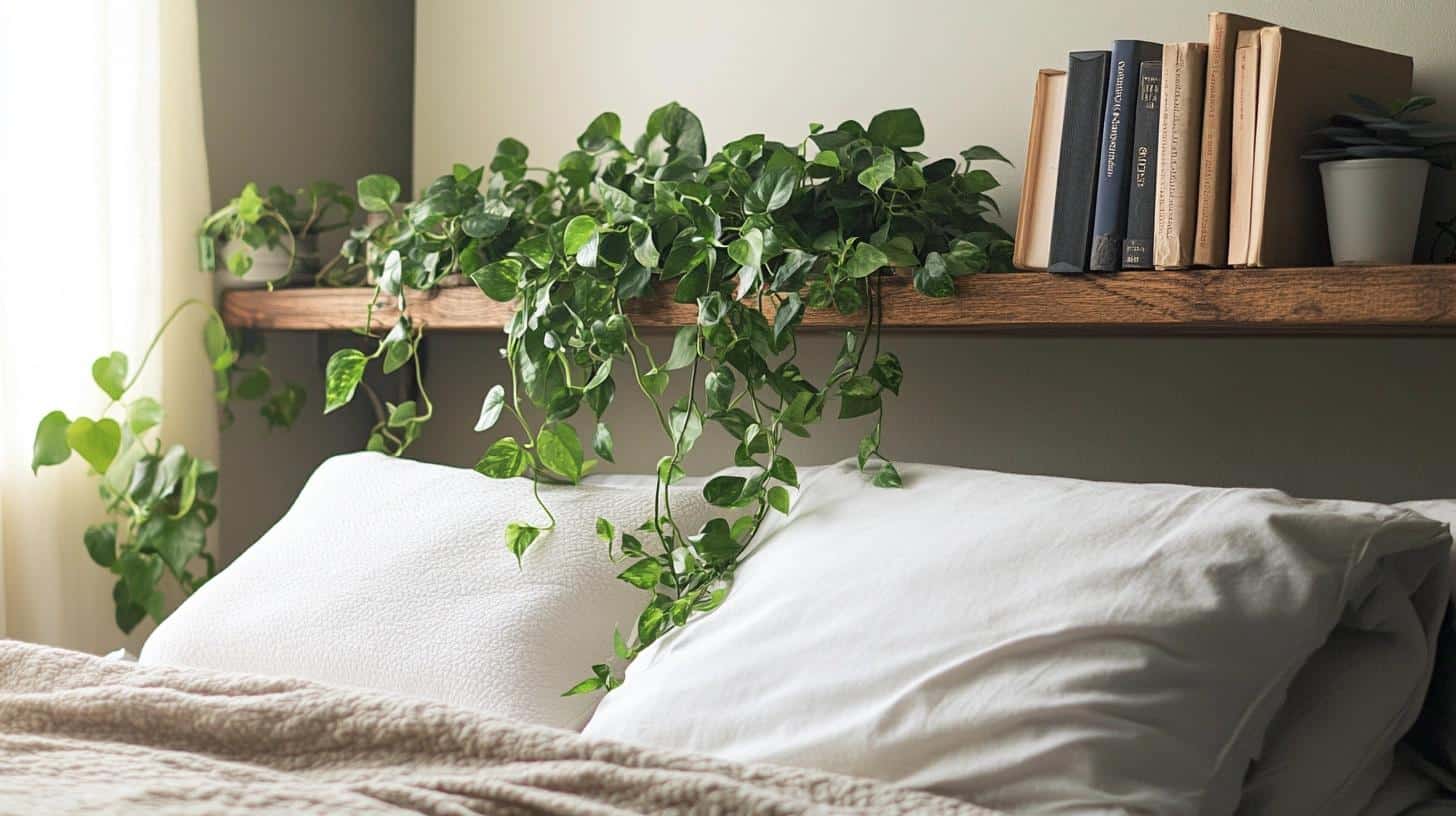
Let trailing plants flow from a high shelf for a dramatic and lush bedroom look.
- Recommended Plants: Pothos, English ivy, string of hearts.
- How to arrange them for maximum impact: Place plants on the edge of the shelf, allowing them to cascade freely.
- Seasonal Styling Ideas: Add fairy lights or seasonal decorations to the shelf for an extra touch.
5. Arrange Plants on Top of a Dresser
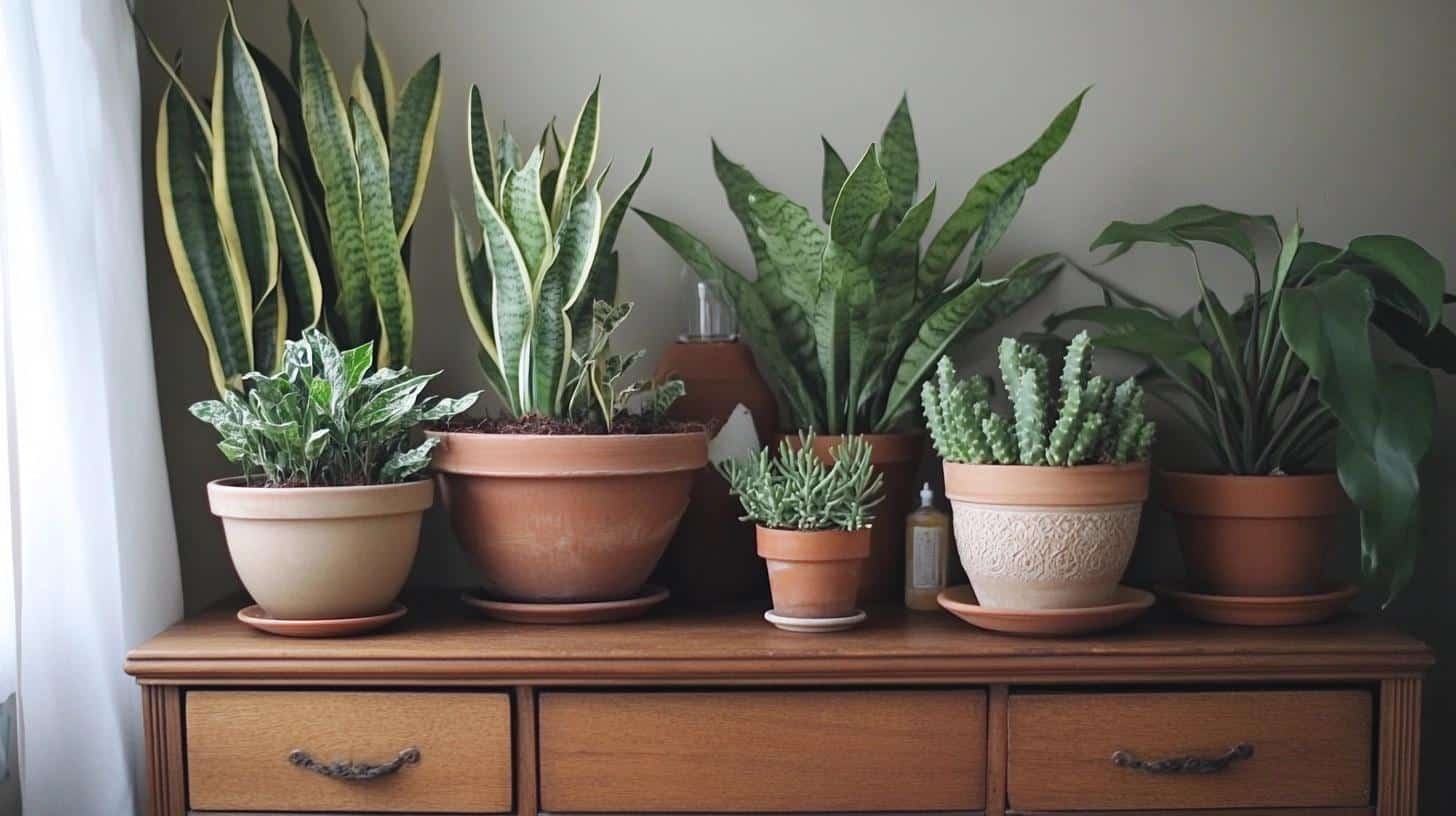
Enhance your dresser with a variety of plants to create a fresh, natural look.
- Recommended Plants: Peace lily, aloe vera, fiddle leaf fig.
- How to arrange them for maximum impact: Place taller plants at the back and smaller ones in front to create depth.
- Seasonal Styling Ideas: Change pots or use seasonal flowers for added color.
6. Use a Woven Basket
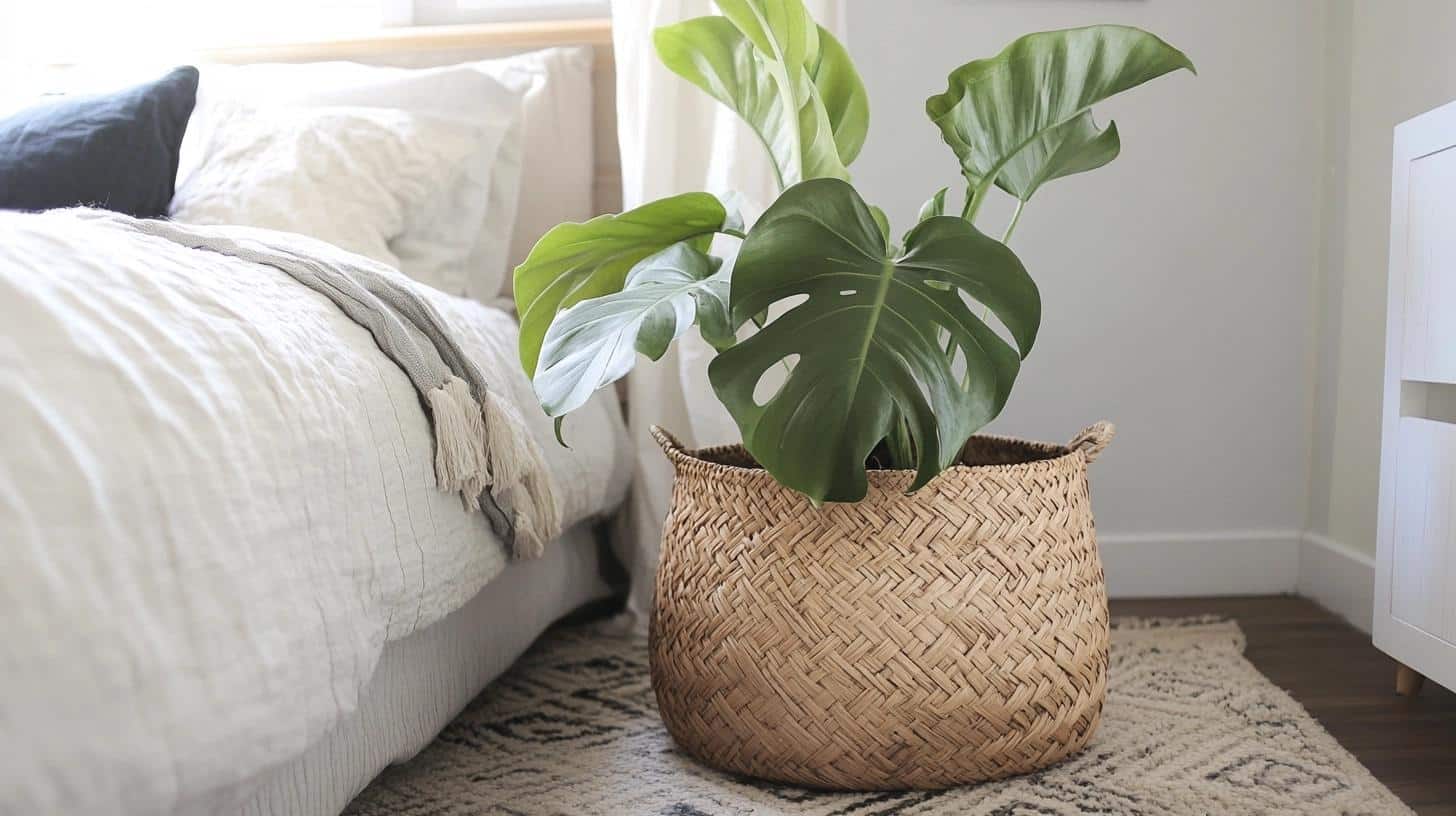
Create a cozy, boho atmosphere with a large, leafy plant in a woven basket.
- Recommended Plants: Monstera, rubber plant, bird of paradise.
- How to arrange them for maximum impact: Position the plant near the bed or a corner for a statement look.
- Seasonal Styling Ideas: Use a variety of baskets in different colors or textures to suit the season.
7. Incorporate Plants into Your Headboard
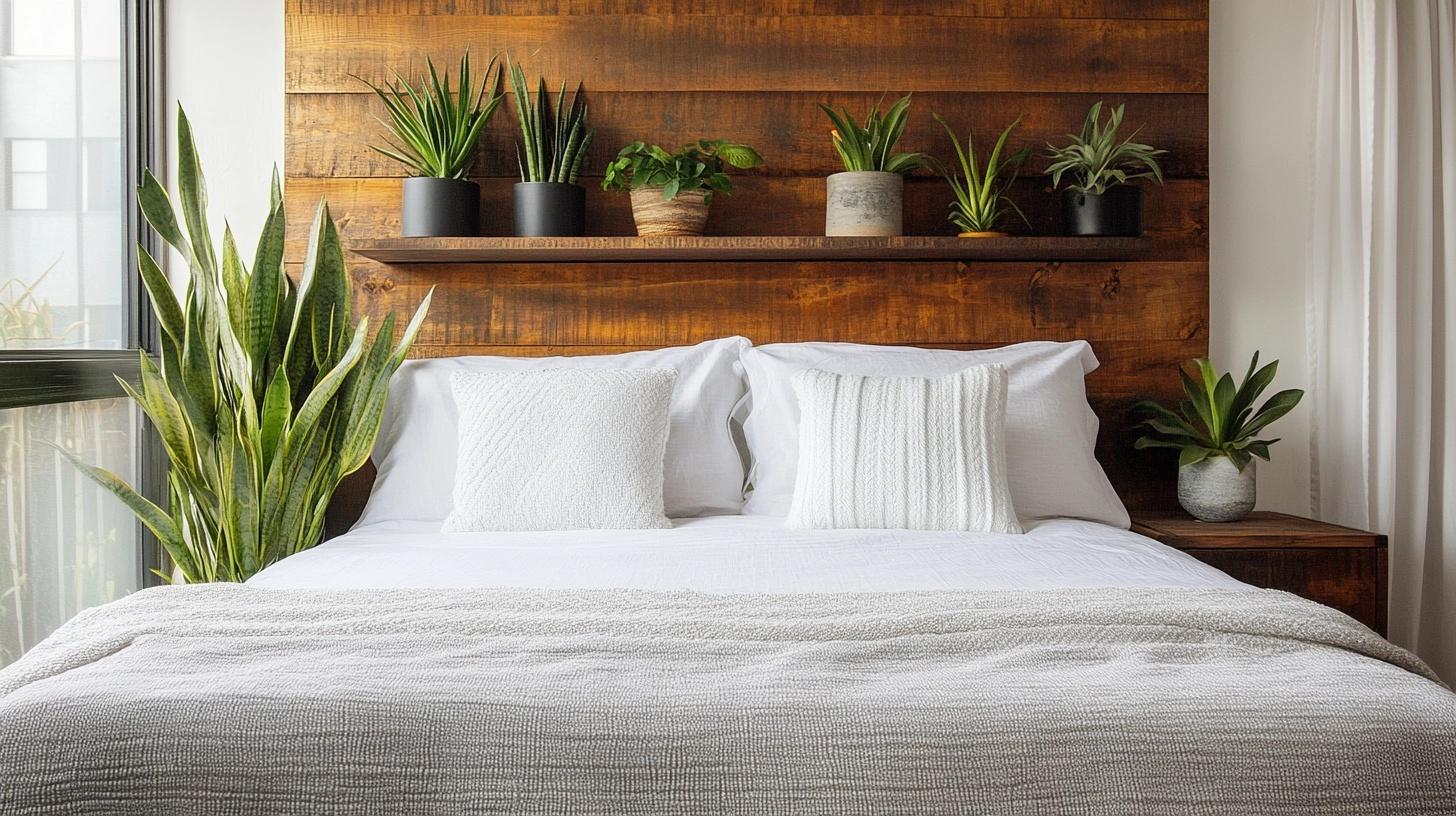
Add plants directly into your headboard for a truly unique and refreshing bedroom design.
- Recommended Plants: Snake plant, air plants, spider plants.
- How to arrange them for maximum impact: Place smaller plants in built-in spaces or shelves in the headboard.
- Seasonal Styling Ideas: Use seasonal plants or flowers to refresh the look throughout the year.
8. Use Wall-Mounted Planters as Art
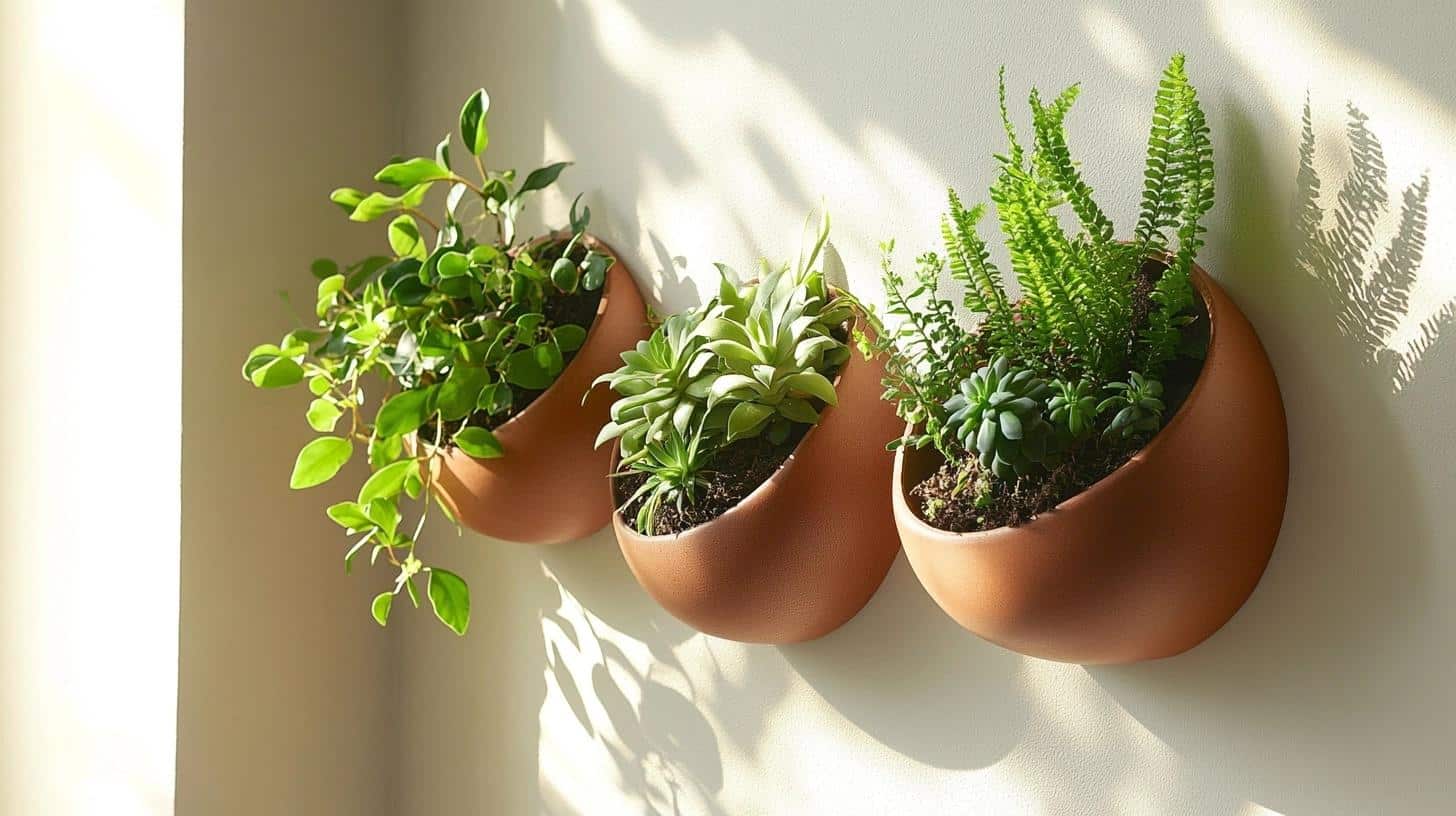
Create a living art piece by mounting plants on the wall, doubling as décor and greenery.
- Recommended Plants: Succulents, air plants, small ferns.
- How to arrange them for maximum impact: Space the planters evenly to create a symmetrical, balanced design.
- Seasonal Styling Ideas: Change up plant types or add seasonal décor to the wall mounts.
9. Decorate Your Nightstand
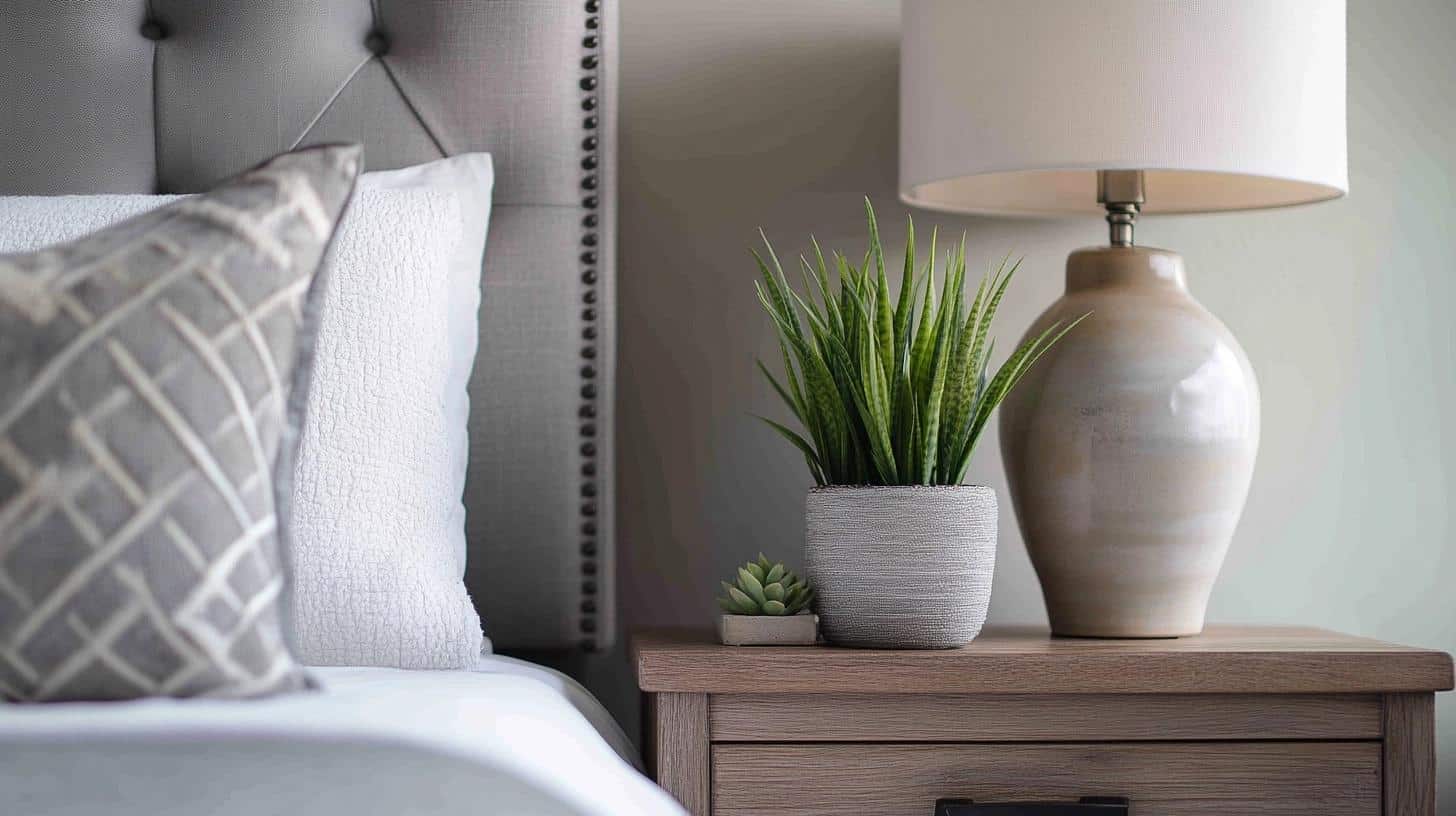
Add small plants to your nightstand for a simple yet effective way to bring nature into your bedroom.
- Recommended Plants: Mini aloe vera, small cacti, peace lily.
- How to arrange them for maximum impact: Place a single small plant next to a lamp or book for a clean look.
- Seasonal Styling Ideas: Use colorful pots or swap plants seasonally for a fresh feel.
10. Place a Plant Next to a Mirror
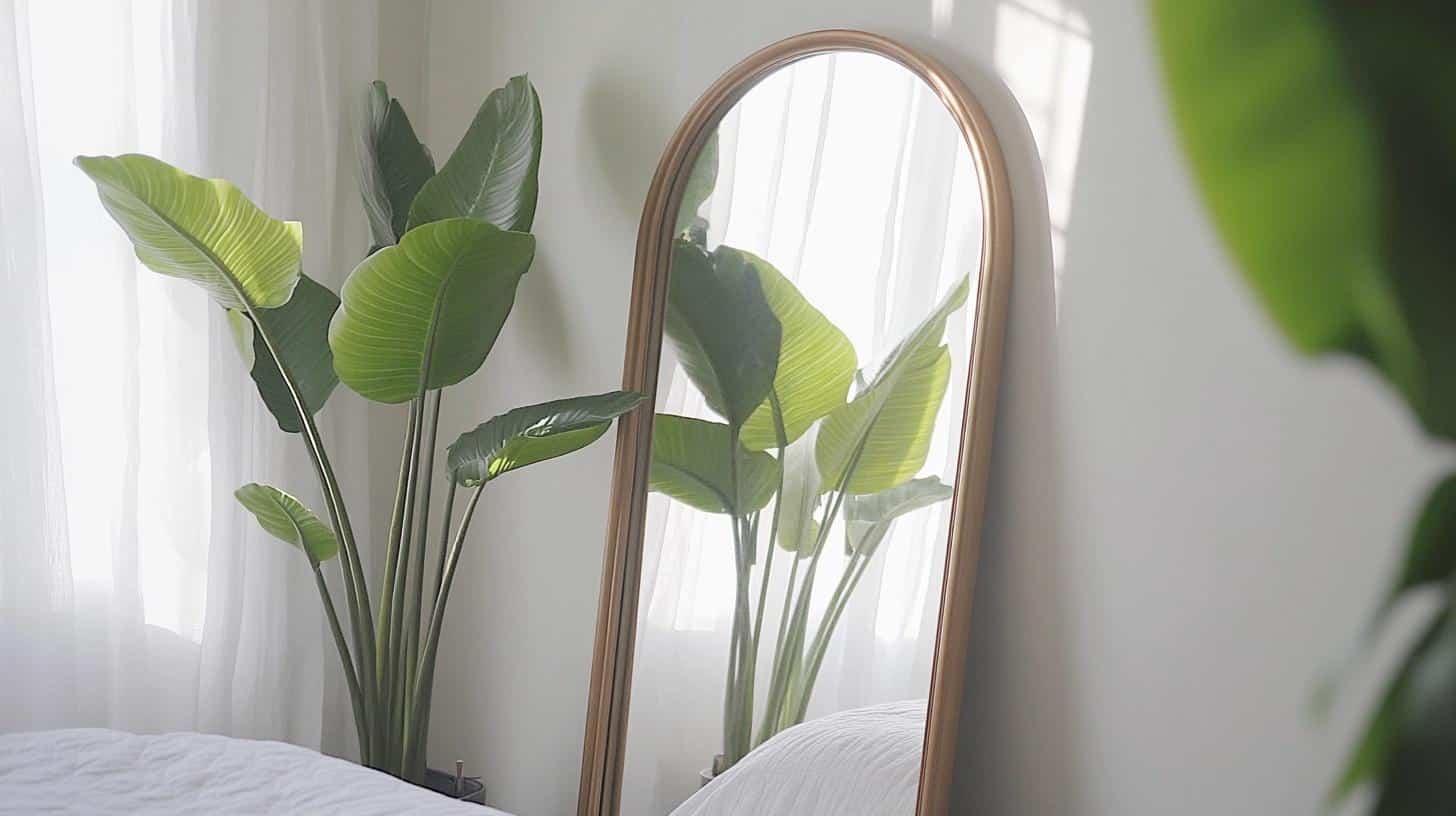
Enhance the brightness and size of your room by placing a plant next to a mirror, reflecting greenery throughout the space.
- Recommended Plants: Fiddle leaf fig, snake plant, monstera.
- How to arrange them for maximum impact: Position the plant at an angle where it reflects the most natural light.
- Seasonal Styling Ideas: Change the mirror’s frame or switch to seasonal planters to keep things fresh.
11. Use a Vintage Ladder
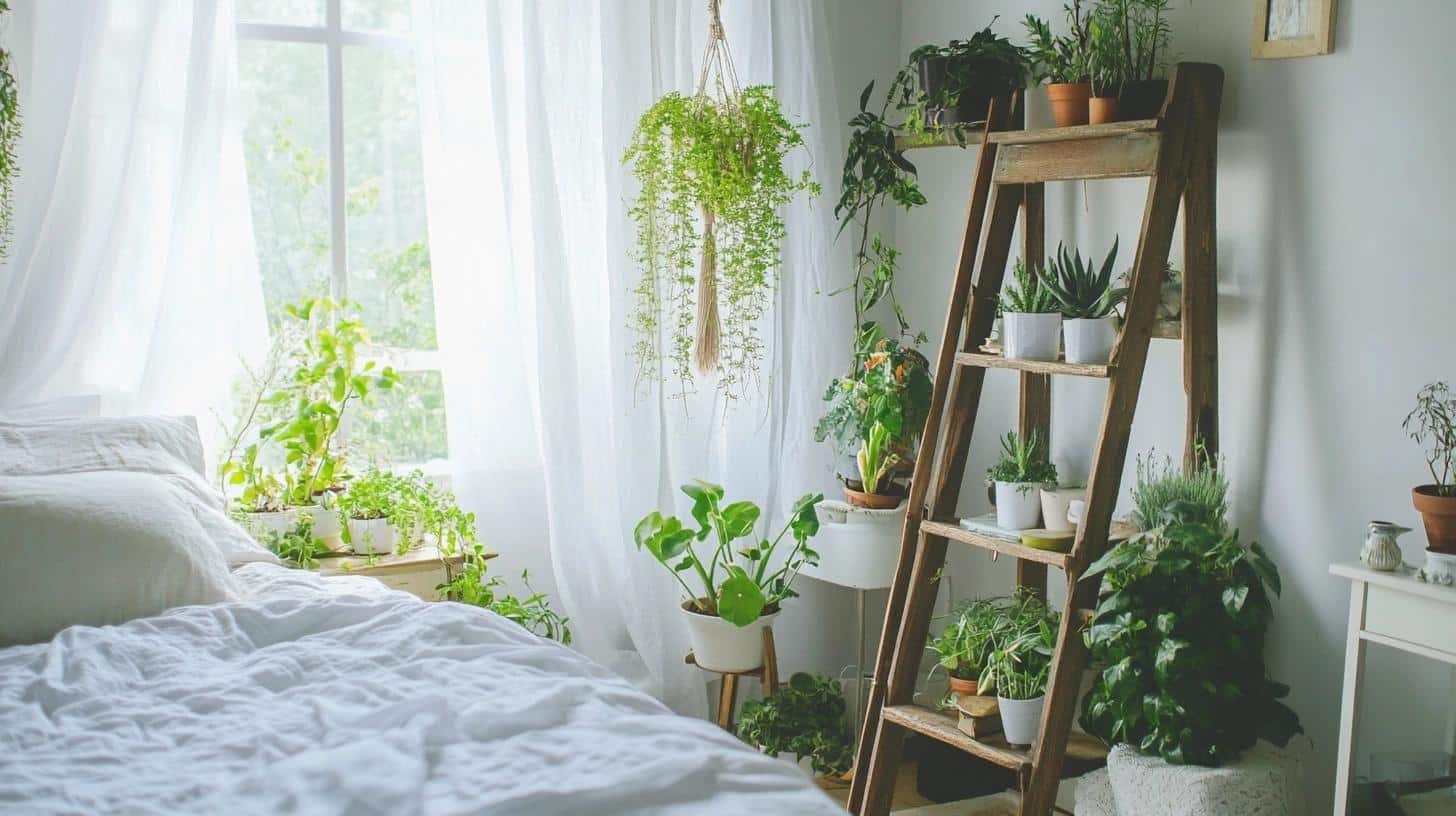
Repurpose a vintage ladder as a stylish plant stand, giving your bedroom a rustic, charming vibe.
- Recommended Plants: Small potted ferns, trailing ivy, succulents.
- How to arrange them for maximum impact: Place the plants on different rungs to create a layered, cascading effect.
- Seasonal Styling Ideas: Decorate the ladder with lights or seasonal garlands for a festive touch.
12. An Oversized Pot
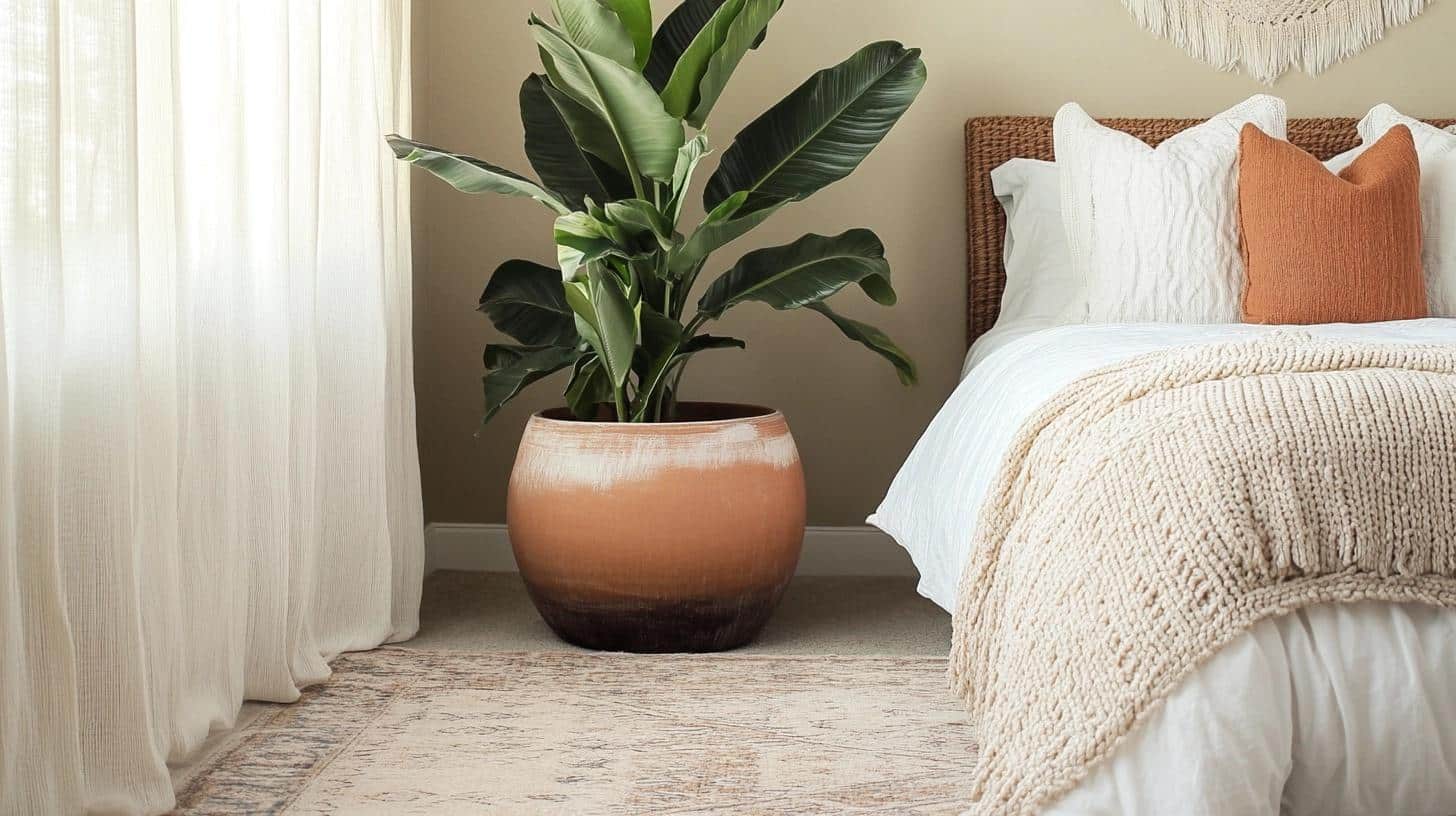
Create a bold statement by placing a large plant in an oversized pot to anchor a bedroom corner.
- Recommended Plants: Rubber plant, monstera, bird of paradise.
- How to arrange them for maximum impact: Position the oversized pot in an empty corner to add dimension to the room.
- Seasonal Styling Ideas: Use seasonal pots or baskets to change up the look with each season.
13. Arrange Small Potted Succulents on a Bedside Table
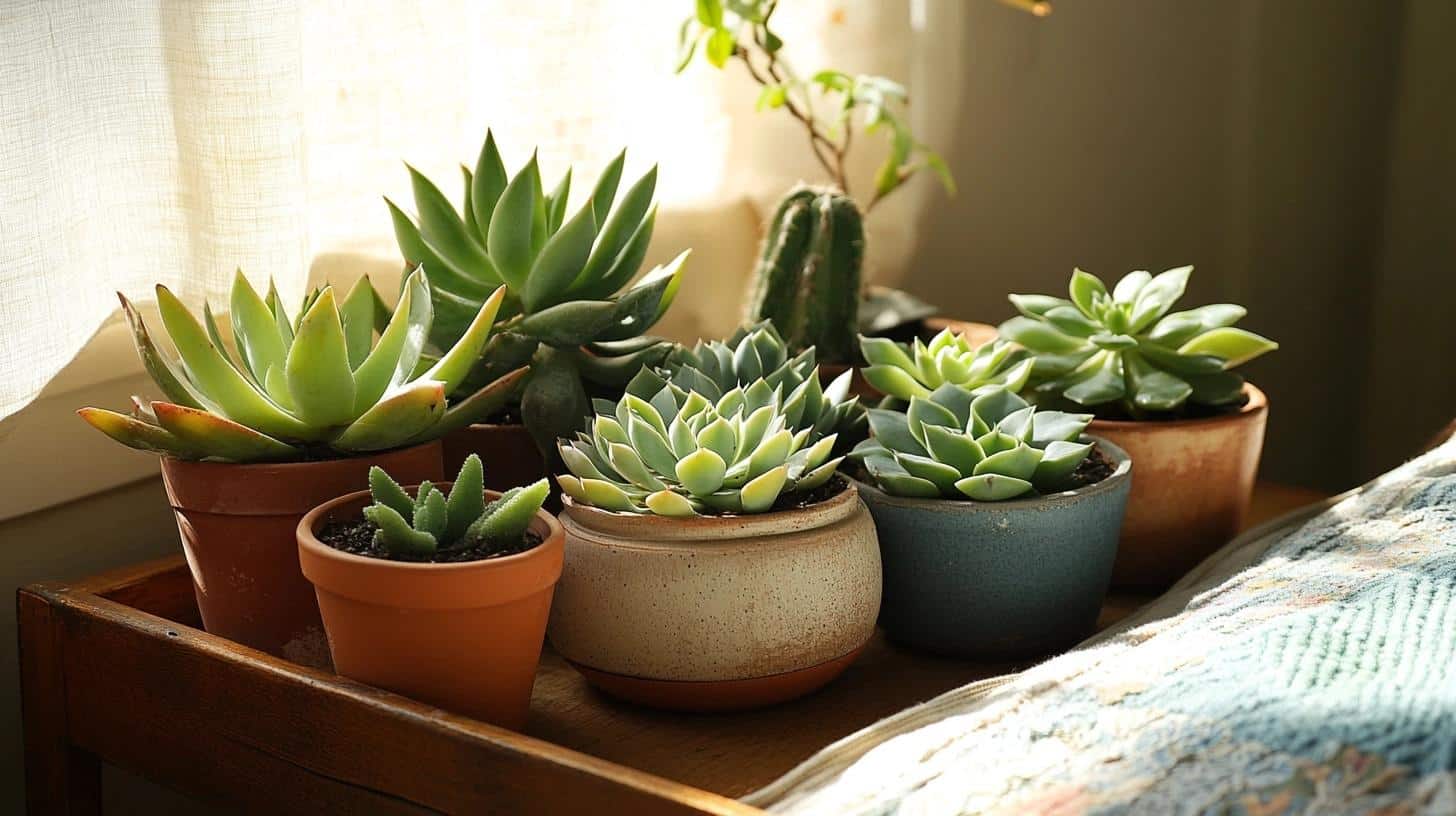
Add charm to your bedside with a collection of small potted succulents, offering a low-maintenance décor option.
- Recommended Plants: Aloe vera, echeveria, jade plant.
- How to arrange them for maximum impact: Group succulents in varied sizes for a balanced look.
- Seasonal Styling Ideas: Use bright, patterned pots in spring or neutral tones in winter.
14. Beige Bedroom with Plants
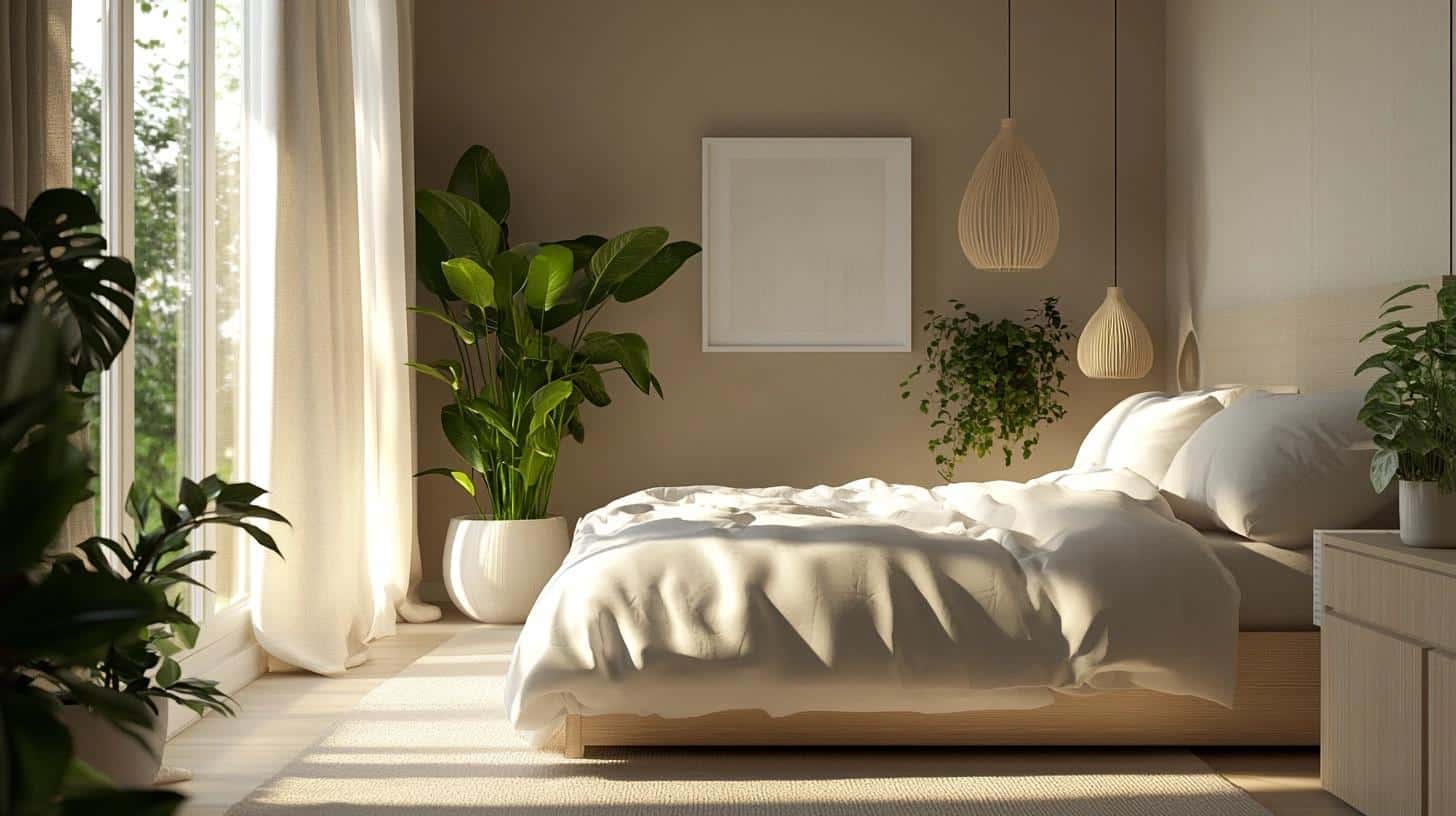
Complement a neutral, beige bedroom by adding green plants to introduce contrast and life.
- Recommended Plants: Spider plant, peace lily, pothos.
- How to arrange them for maximum impact: Use light-colored pots that blend well with beige décor.
- Seasonal Styling Ideas: Incorporate warm-hued pots or swap in seasonal flowering plants.
15. Use Terracotta Pots
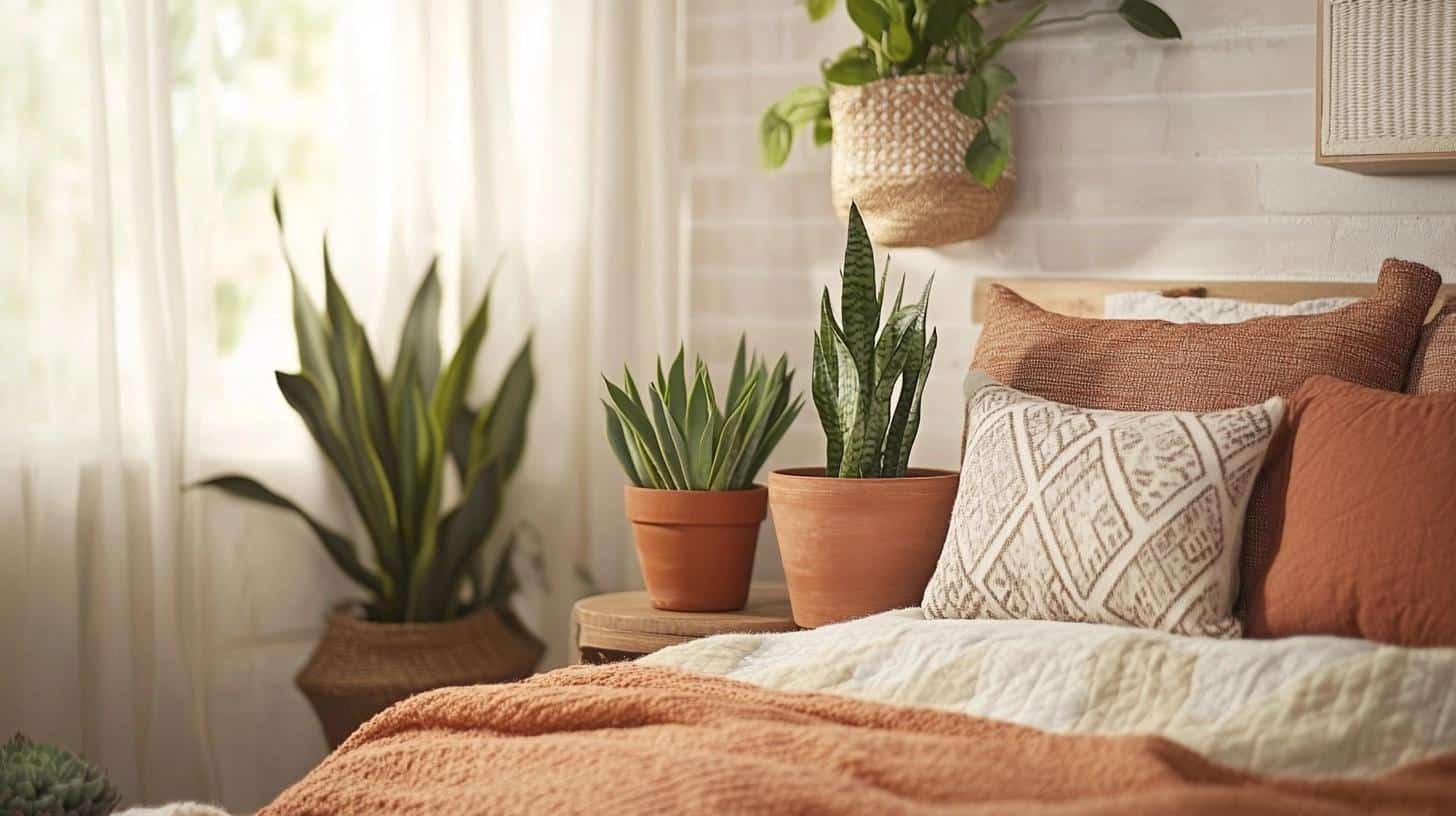
Bring a rustic, earthy vibe to your bedroom by using terracotta pots to house your plants. These pots add warmth and texture to your décor.
- Recommended Plants: Aloe vera, succulents, snake plant.
- How to arrange them for maximum impact: Group a few terracotta pots of varying sizes together for a cohesive look.
- Seasonal Styling Ideas: Wrap the pots with seasonal-colored ribbons or paint them in festive designs to match the season.
16. Use Soilless Containers
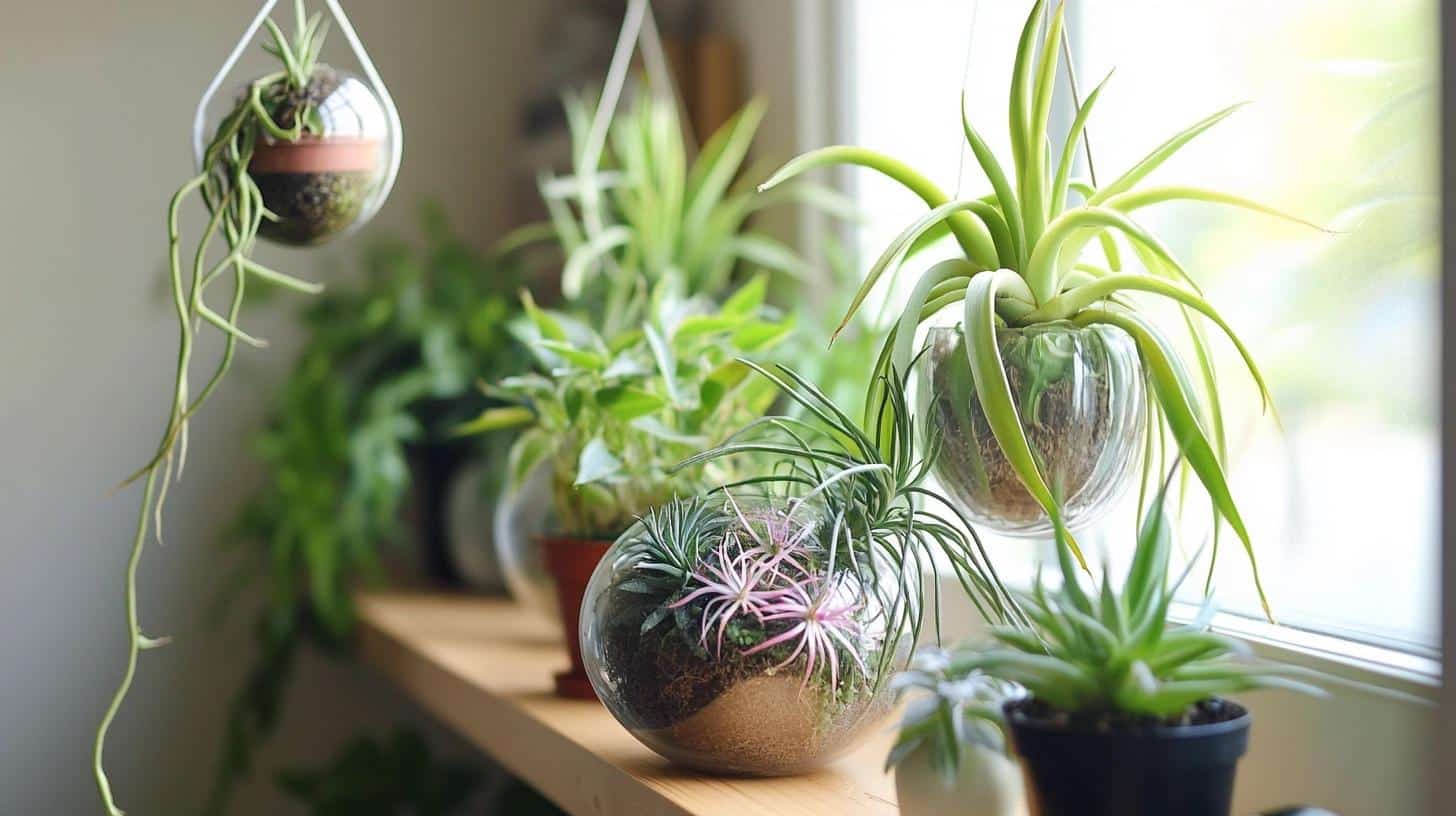
Create a unique display with soilless plants like air plants or hydroponic setups, perfect for a modern bedroom.
- Recommended Plants: Air plants, hydroponic basil, orchids.
- How to arrange them for maximum impact: Display in clear containers or hang them near windows.
- Seasonal Styling Ideas: Add colorful water or seasonal containers to match the décor changes.
17. Create a Reading Corner
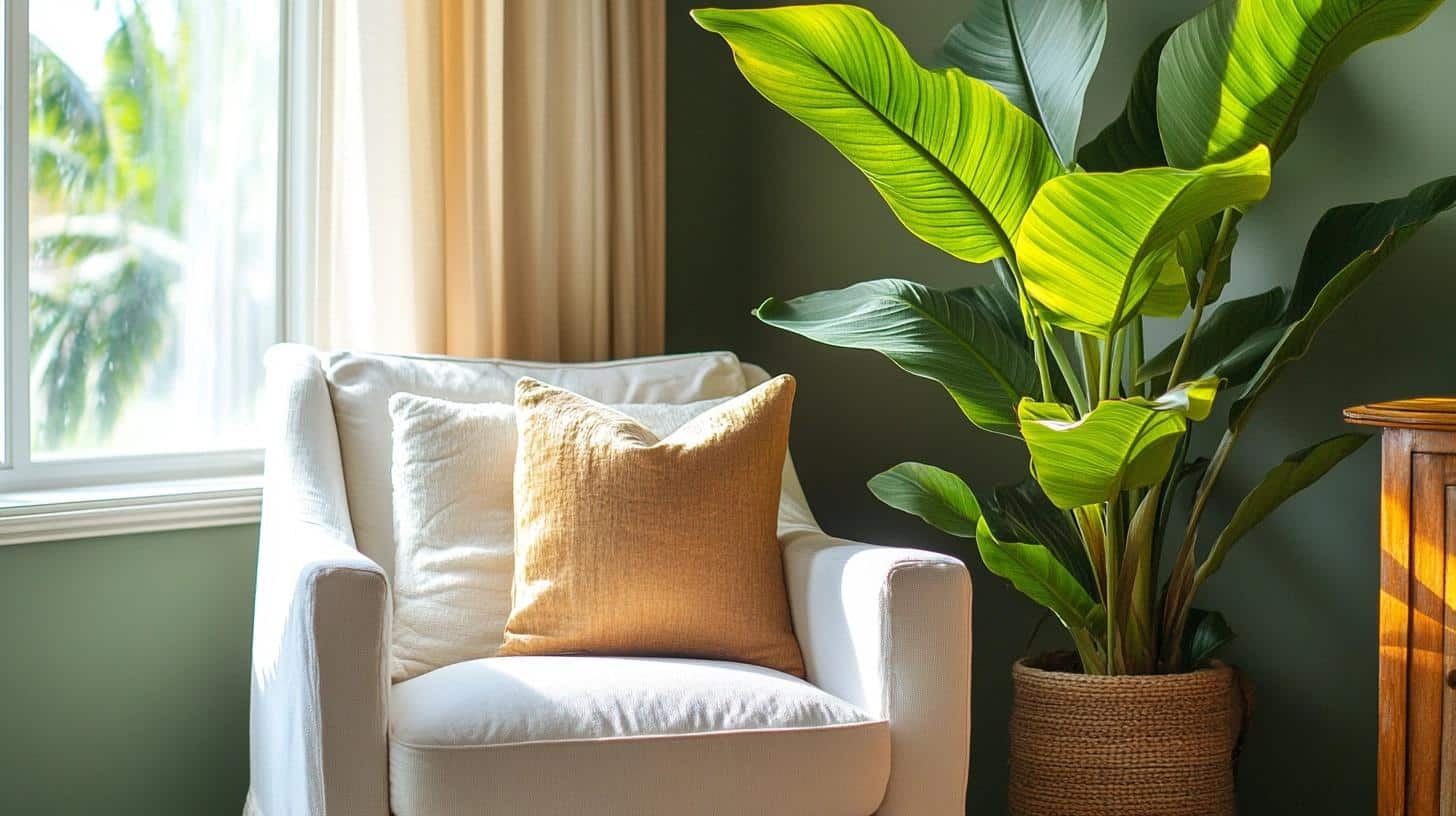
Create a relaxing reading nook by placing a tall plant beside your chair, bringing nature into your space.
- Recommended Plants: Fiddle leaf fig, rubber plant, bird of paradise.
- How to arrange them for maximum impact: Place the tall plant slightly behind the chair for a cozy, inviting feel.
- Seasonal Styling Ideas: Switch to seasonal planters or add decorative lights to the plant for warmth.
18. Plants on a Stack of Books
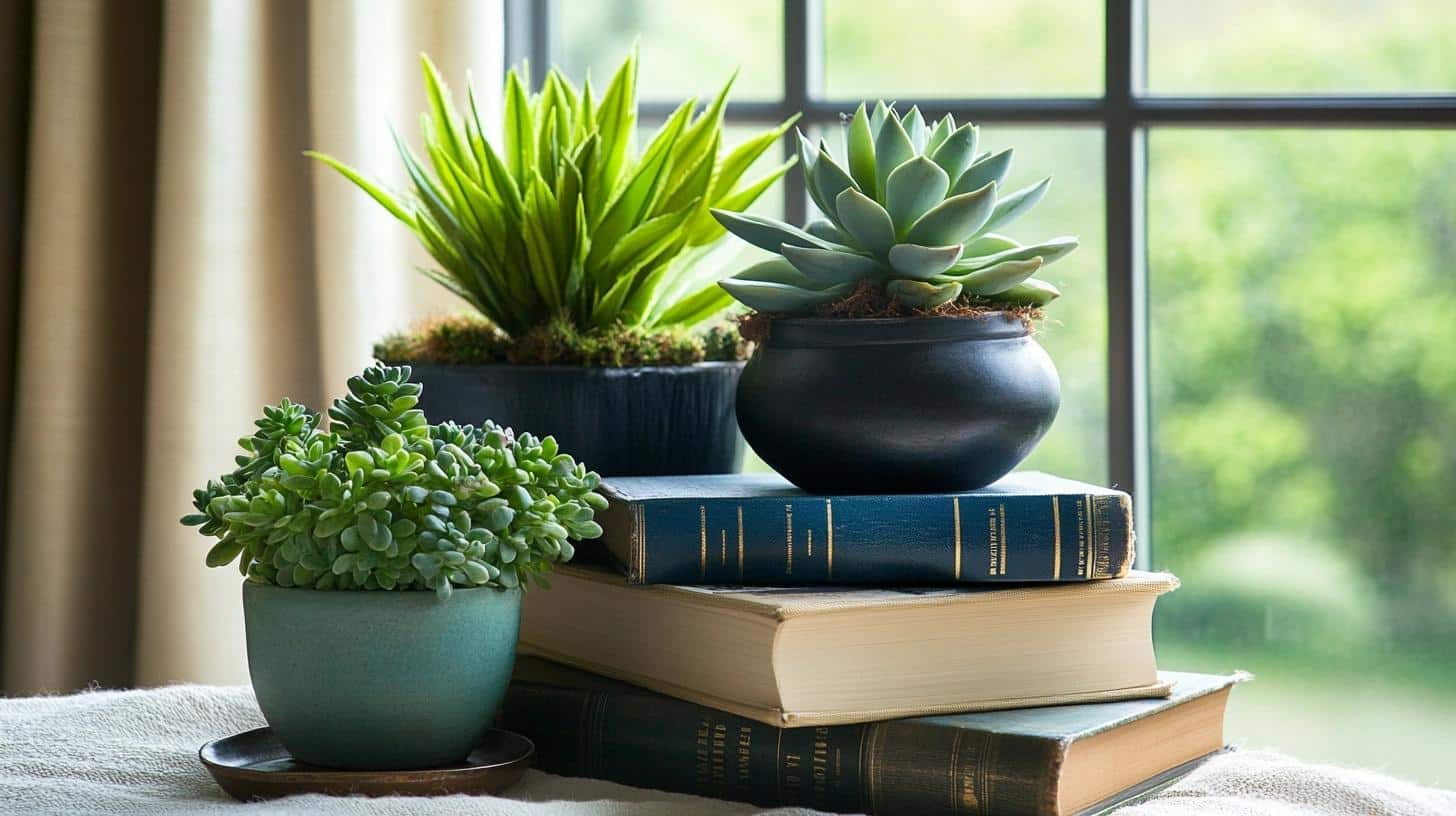
Combine your love for reading and nature by placing small plants on a stack of books for a creative décor touch.
- Recommended Plants: Small succulents, cacti, mini peace lily.
- How to arrange them for maximum impact: Stack books of varying sizes and place plants on top for height.
- Seasonal Styling Ideas: Use books with seasonal themes or colored covers to complement the time of year.
19. Relax Under a Plant Canopy
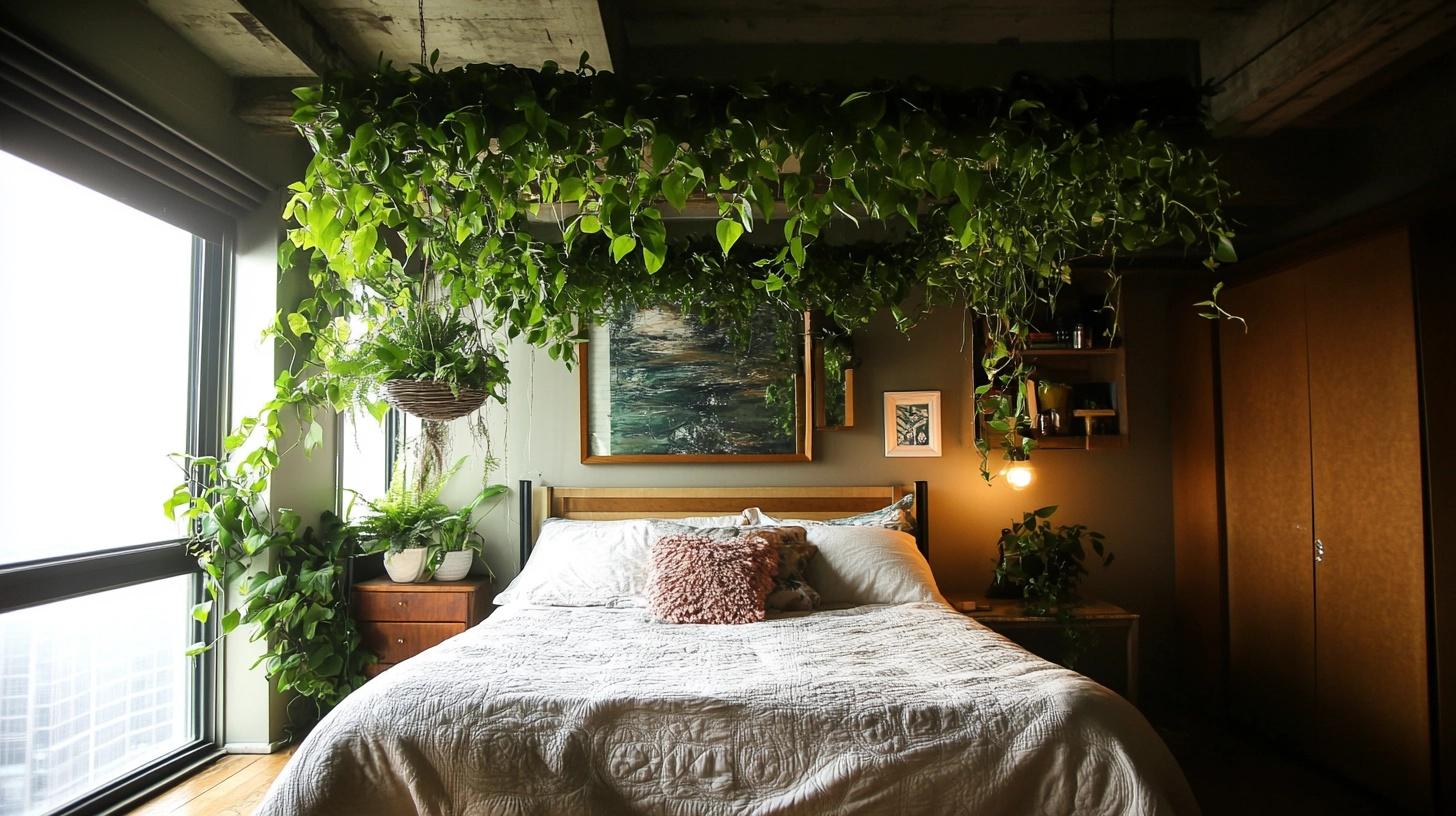
Turn your bedroom into a calming oasis by hanging plants above the bed to create a natural canopy.
- Recommended Plants: Boston fern, pothos, string of pearls.
- How to arrange them for maximum impact: Hang trailing plants from the ceiling to form a green canopy over the bed.
- Seasonal Styling Ideas: Add fairy lights or seasonal decorations like ribbons for a festive feel.
20. Use the Mantle if Your Bedroom Has One
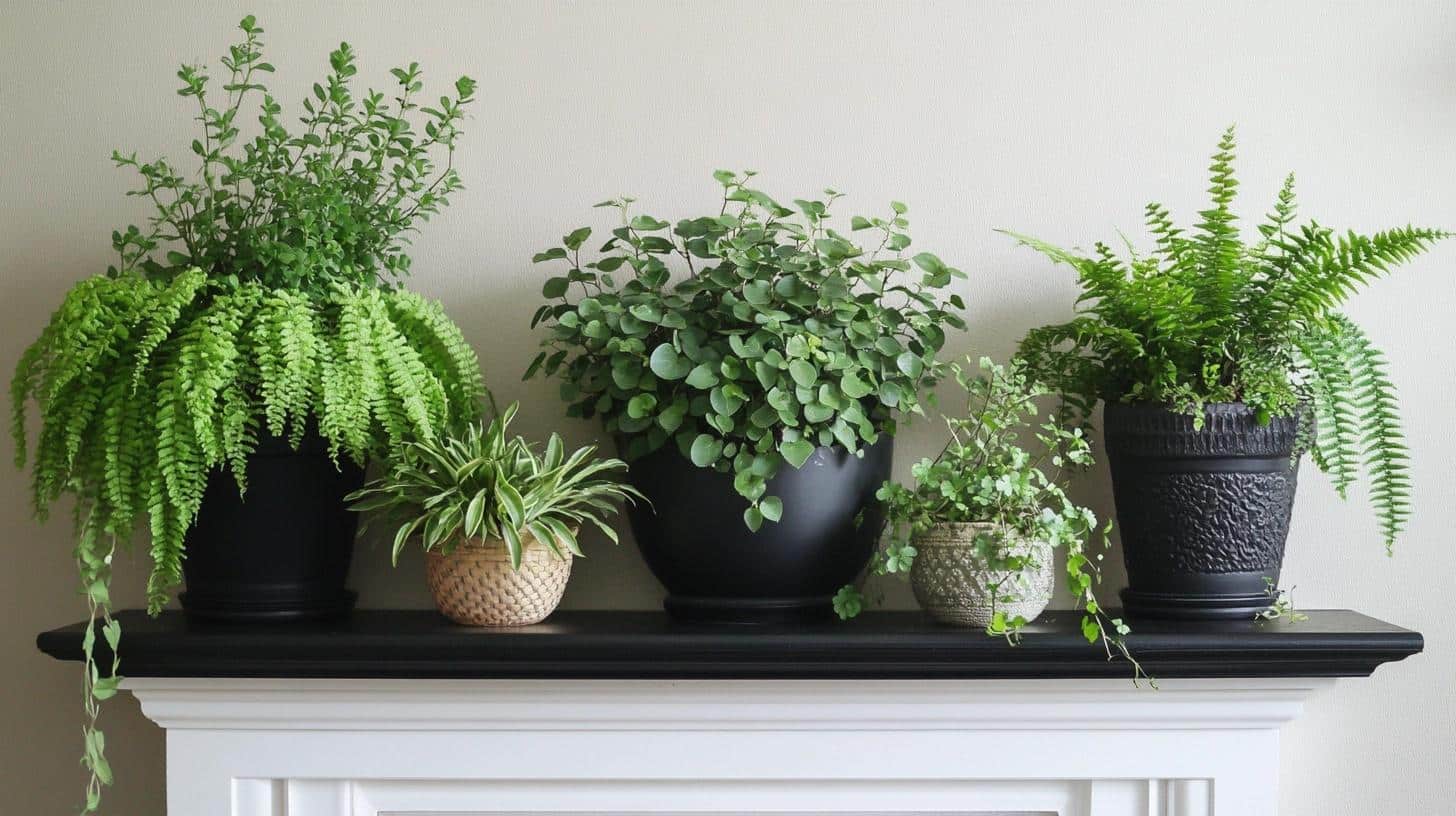
If your bedroom has a fireplace mantle, use it to display plants for a cozy, nature-filled look.
- Recommended Plants: Small ferns, ivy, succulents.
- How to arrange them for maximum impact: Place taller plants at the edges and smaller ones in the center for balance.
- Seasonal Styling Ideas: Decorate the mantle with seasonal accents like garlands or candles alongside the plants.
21. Use Decorative Hooks
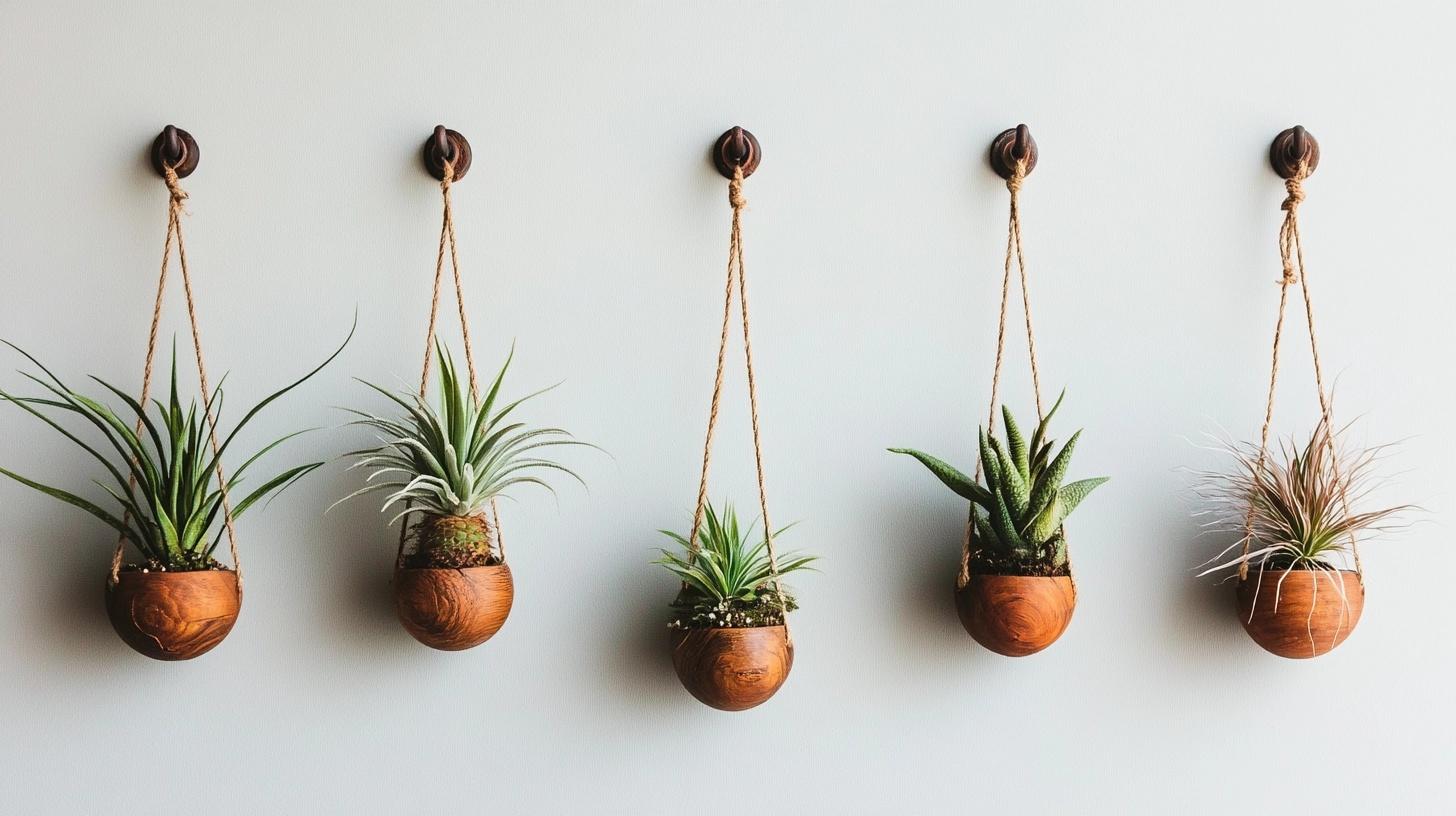
Incorporate mini air plants on decorative hooks or wall hangings to add a creative and minimal touch to your walls.
- Recommended Plants: Tillandsia, air ferns, small bromeliads.
- How to arrange them for maximum impact: Hang plants at different heights for a dynamic look.
- Seasonal Styling Ideas: Change the hooks or wall hangings to reflect seasonal themes or colors.
22. Use Tiered Shelving
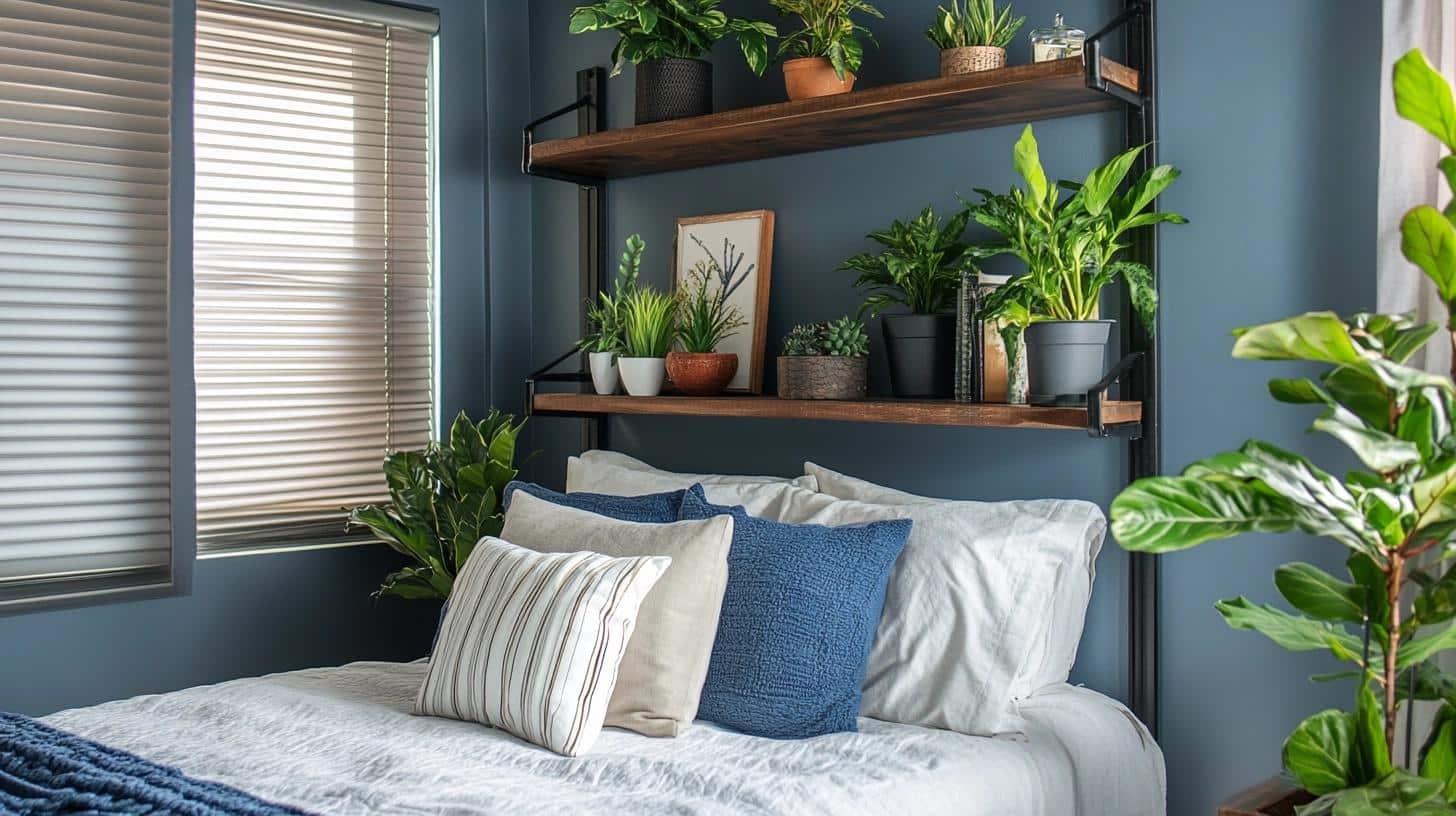
Maximize space and style with tiered shelving that allows you to showcase both plants and decorative objects.
- Recommended Plants: Spider plant, pothos, succulents.
- How to arrange them for maximum impact: Place larger plants on lower shelves and smaller plants on top tiers.
- Seasonal Styling Ideas: Rotate seasonal plants or add holiday décor to the shelves.
23. Place a Small Cactus on a Floating Wall Shelf
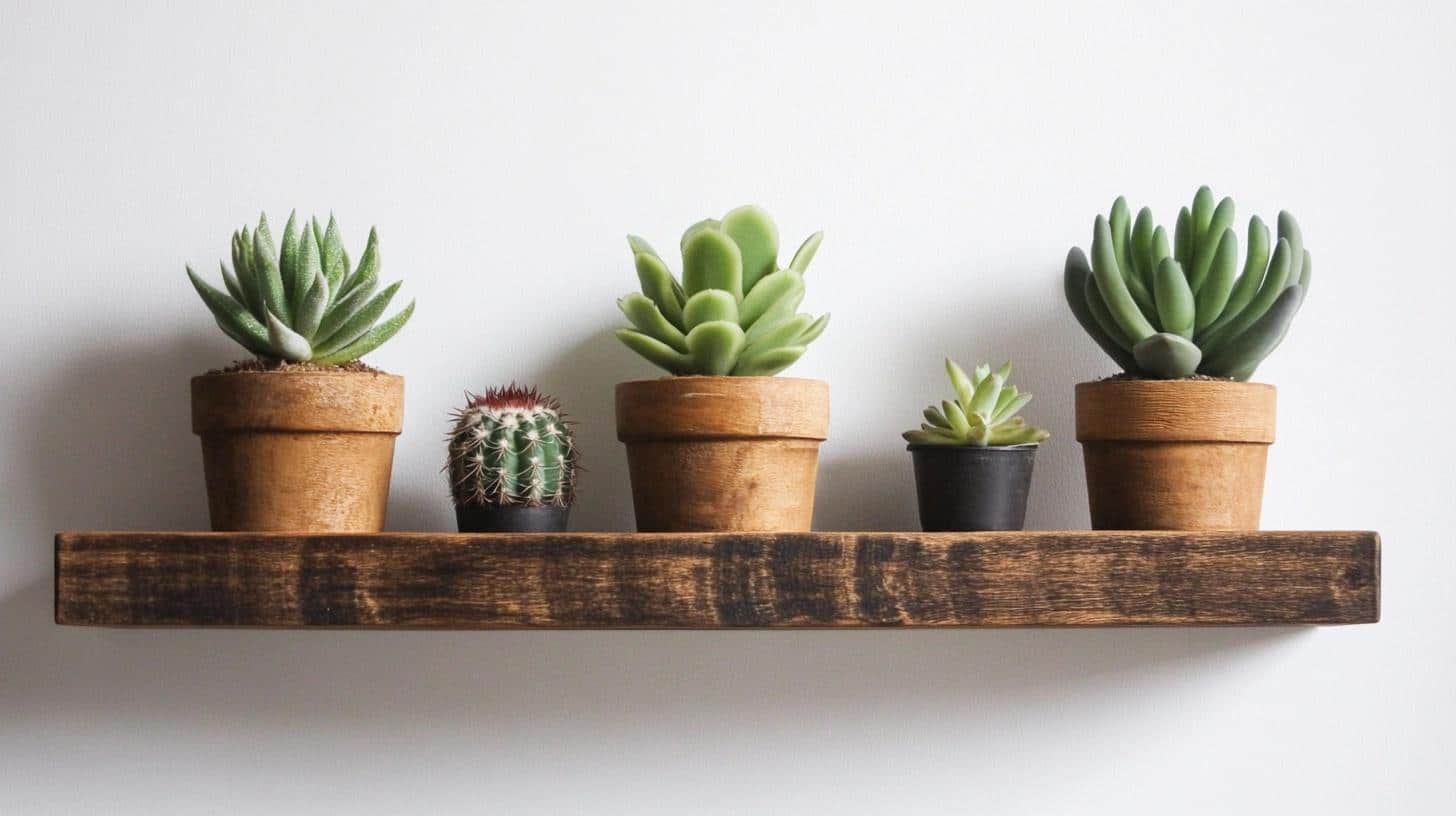
Enhance your bedroom’s modern aesthetic with small cacti or succulents displayed on floating wall shelves.
- Recommended Plants: Cacti, echeveria, haworthia.
- How to arrange them for maximum impact: Space the shelves evenly and place a single plant per shelf for a minimalist look.
- Seasonal Styling Ideas: Use seasonal pots or switch out plants based on seasonal growth patterns.
How Do I Care for Plants in Low-Light Bedrooms?
Many bedrooms don’t get much sunlight, but that doesn’t mean you can’t have plants. Here’s how to care for plants in low-light conditions:
- Choose the right plants: Some plants thrive in low light. Look for snake plants, pothos, or ZZ plants. These tough guys can handle dimmer spaces.
- Rotate your plants: Every week, turn your plants a quarter turn. This helps all sides get some light and grow evenly.
- Clean the leaves: Dust can block what little light there is. Wipe leaves gently with a damp cloth to keep them clean and healthy.
- Don’t overwater: Plants in low light need less water. Check the soil before watering – if it’s still damp, wait a day or two.
- Use artificial light: If your room is very dark, consider using grow lights. These can give your plants the extra boost they need.
- Avoid fertilizer: Plants in low light grow slower, so they need less food. Fertilize only during growing seasons, and use half the recommended amount.
- Watch for signs of trouble: Yellow leaves often mean too much water, while brown edges could signal too little. Adjust your care as needed.
With these tips, you can keep your bedroom plants happy even without much natural light. In the next section, we’ll look at some great low-maintenance plants for your bedroom.
Low-Maintenance Plants Perfect for Bedrooms
Coconut Palm Tree
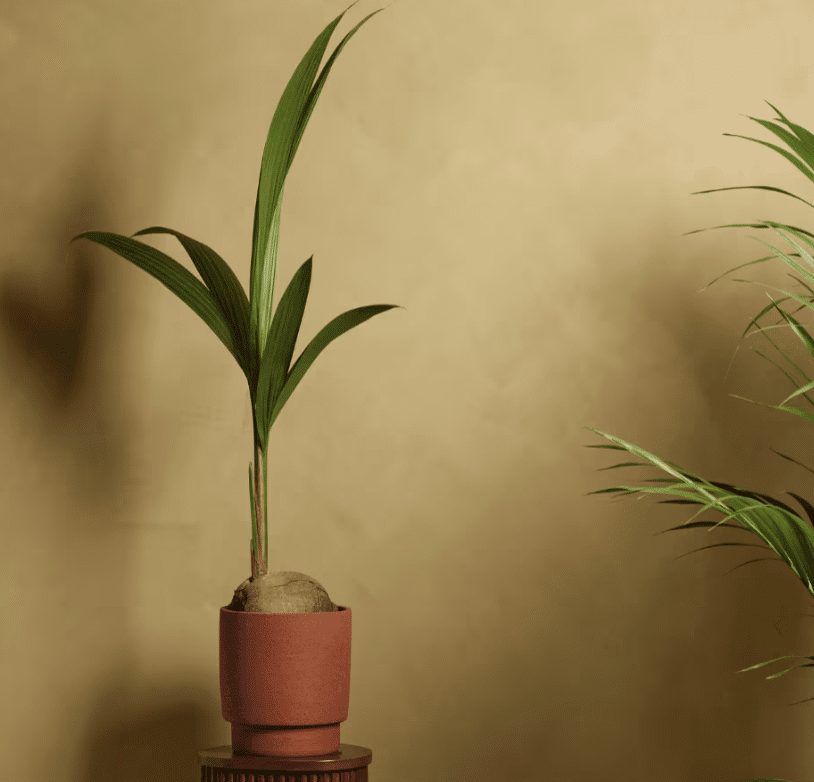
- Other Name: Cocos nucifera
- Maintenance Tips: Needs bright, indirect sunlight and regular watering; keep the soil moist but not soggy.
- Possible Allergies: Rare, but coconut pollen can cause minor allergic reactions in sensitive individuals.
- Pet Safety: Non-toxic to cats and dogs, making it safe for homes with pets.
- Seasonal Care: In winter, reduce watering as growth slows down. In summer, ensure higher humidity and frequent misting.
Peace Lily
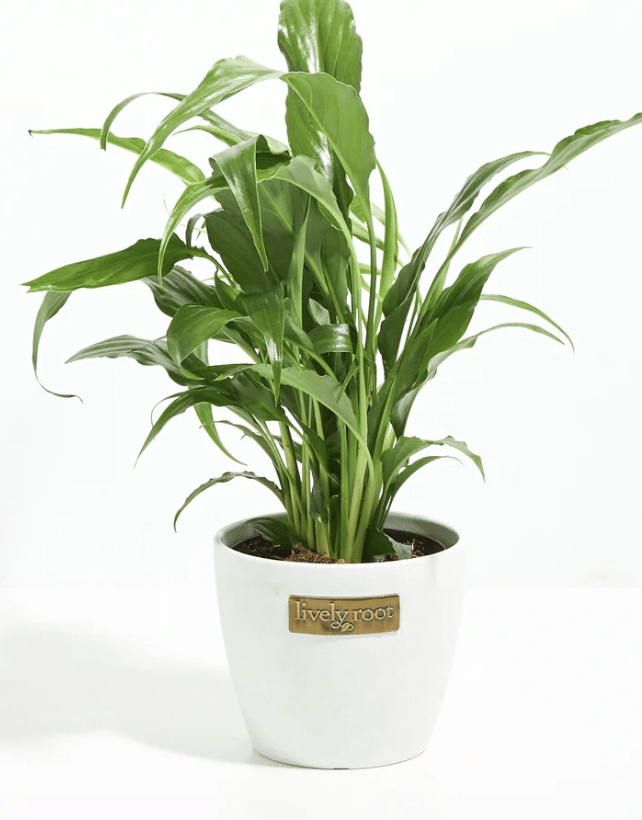
- Other Name: Spathiphyllum
- Maintenance Tips: Thrives in low light, water when the top inch of soil is dry, mist occasionally for humidity.
- Possible Allergies: Can cause skin irritation or respiratory issues in sensitive individuals.
- Pet Safety: Toxic to cats and dogs if ingested, can cause vomiting or difficulty breathing.
- Seasonal Care: Water less in winter as it requires less hydration; increase misting in dry summer months to maintain humidity.
Aglaonema
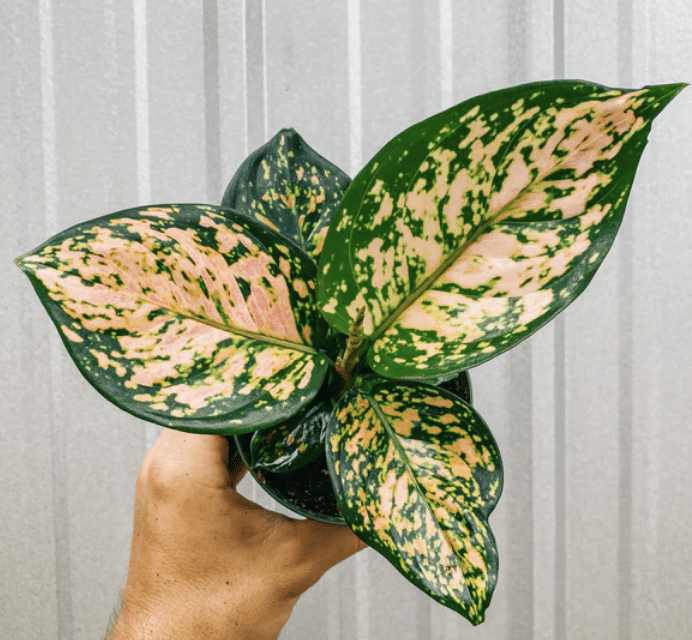
- Other Name: Chinese Evergreen
- Maintenance Tips: Prefers low to medium light, water moderately when the soil feels dry to touch.
- Possible Allergies: Sap may cause skin irritation; avoid direct contact.
- Pet Safety: Toxic to cats and dogs if ingested, can cause swelling and pain in the mouth.
- Seasonal Care: Reduce watering during winter. In warmer months, ensure indirect light and mist the leaves if the air is dry.
Philodendron Birkin
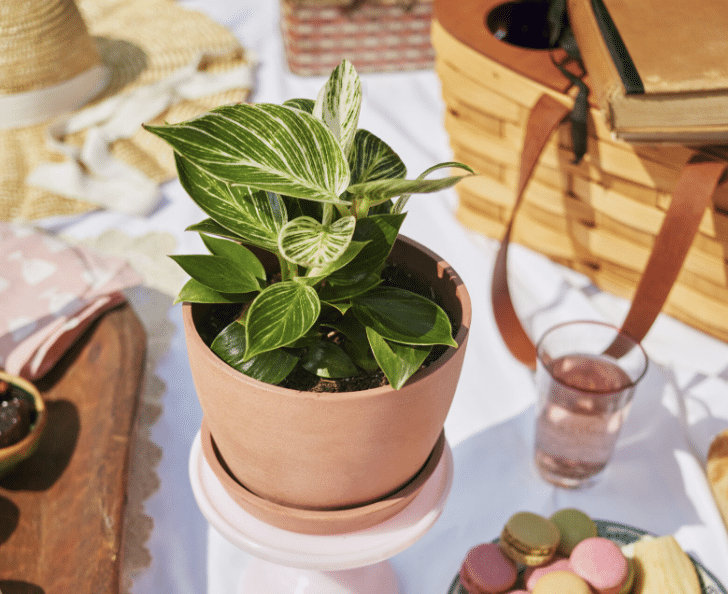
- Other Name: None
- Maintenance Tips: Prefers bright, indirect light; water when the top inch of soil is dry.
- Possible Allergies: Generally safe, but sap may cause mild skin irritation.
- Pet Safety: Toxic to cats and dogs if ingested, can cause oral irritation and swelling.
- Seasonal Care: Reduce watering in winter; increase humidity during dry months with occasional misting.
Lavender
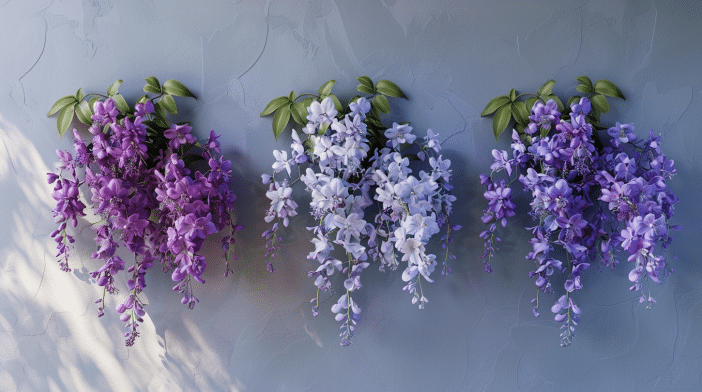
- Other Name: Lavandula
- Maintenance Tips: Requires full sunlight and well-drained soil; water moderately but don’t allow soil to become waterlogged.
- Possible Allergies: Lavender pollen may trigger mild allergic reactions like sneezing.
- Pet Safety: Non-toxic to pets, but large amounts can cause stomach upset.
- Seasonal Care: In winter, keep indoors in a sunny spot; prune after blooming in spring or early summer.
Rubber Plant
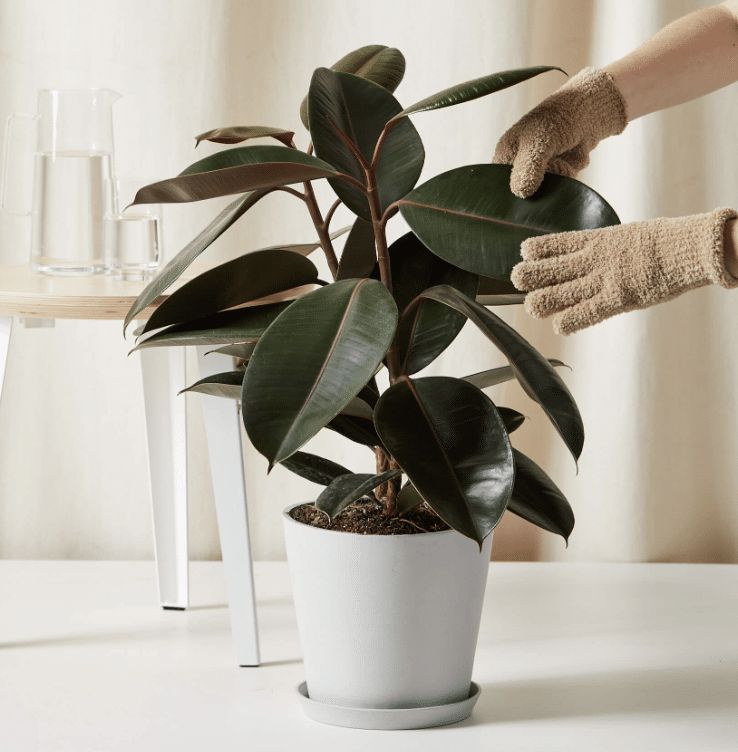
- Other Name: Ficus elastica
- Maintenance Tips: Needs bright, indirect light; water when the soil dries out, but avoid overwatering.
- Possible Allergies: Sap can cause skin irritation.
- Pet Safety: Toxic to pets if ingested, can cause vomiting and mouth irritation.
- Seasonal Care: Reduce watering in winter and wipe leaves occasionally to keep them dust-free.
Lemon Button Fern
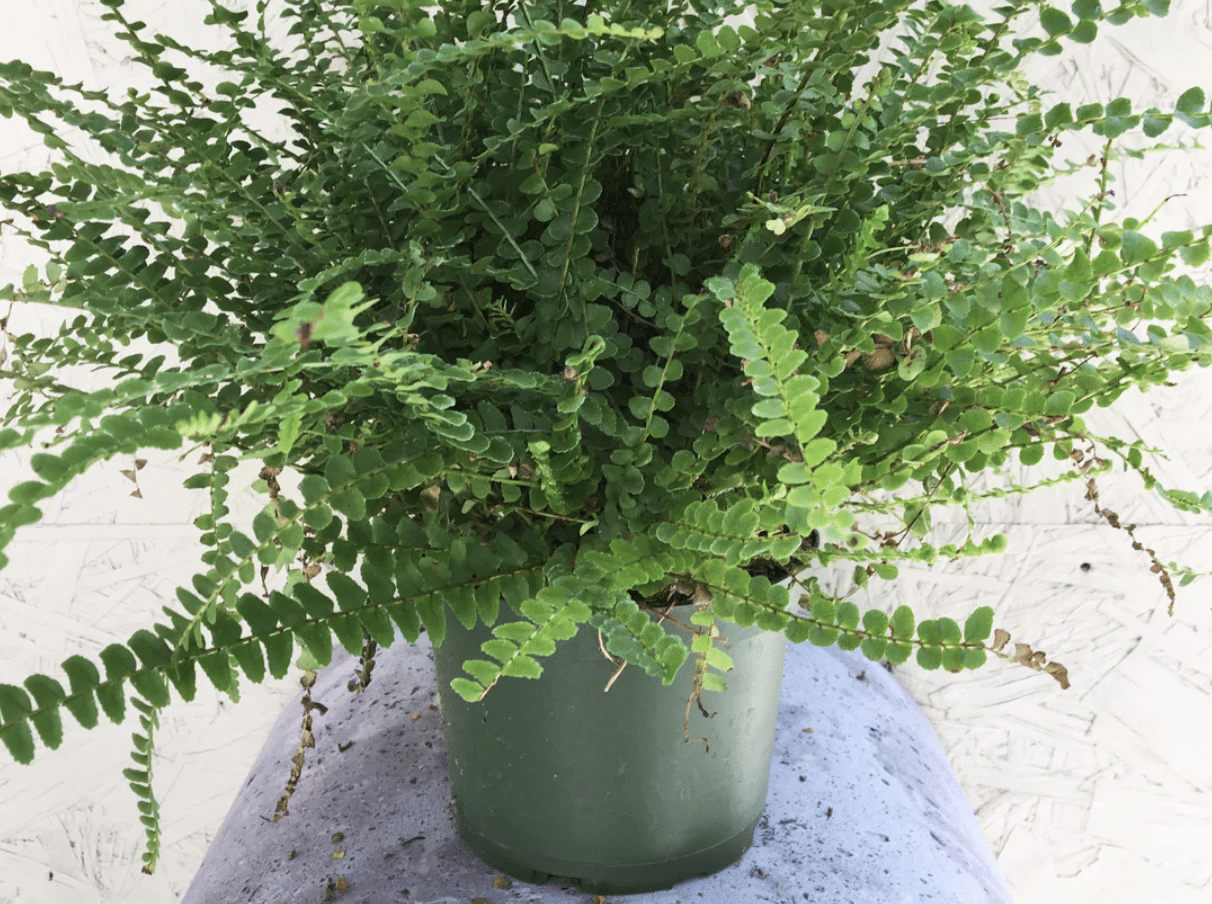
- Other Name: Nephrolepis cordifolia ‘Duffii’
- Maintenance Tips: Thrives in low light with high humidity; keep the soil consistently moist but not waterlogged.
- Possible Allergies: Generally allergy-friendly.
- Pet Safety: Non-toxic to pets, safe for cats and dogs.
- Seasonal Care: Increase humidity in winter by misting or using a humidifier; reduce watering in colder months.
Parlor Palm
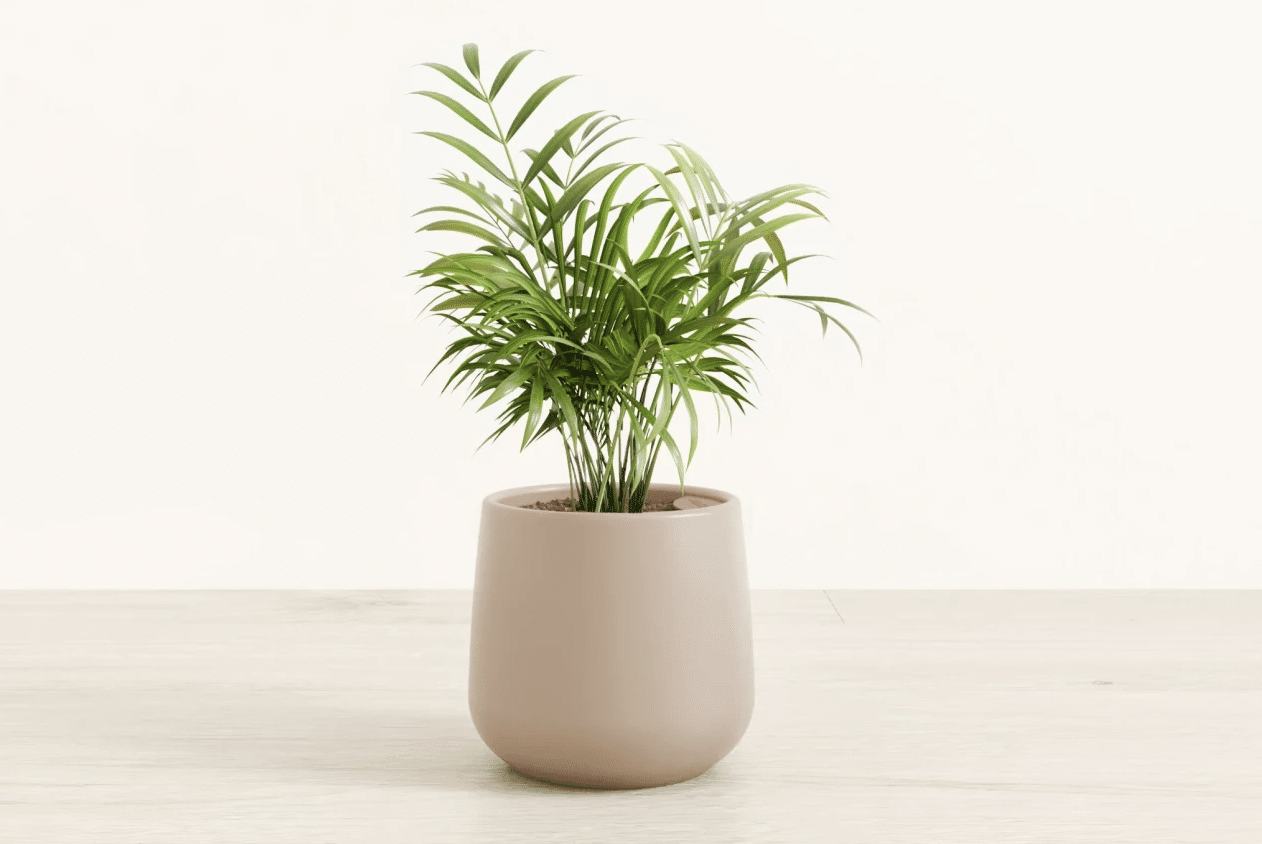
- Other Name: Chamaedorea elegans
- Maintenance Tips: Prefers low to medium light and evenly moist soil; avoid overwatering.
- Possible Allergies: Considered safe for allergy sufferers.
- Pet Safety: Non-toxic to pets, safe for both cats and dogs.
- Seasonal Care: Water less in winter, and keep it away from drafts and direct heat sources during colder months.
Spider Plant
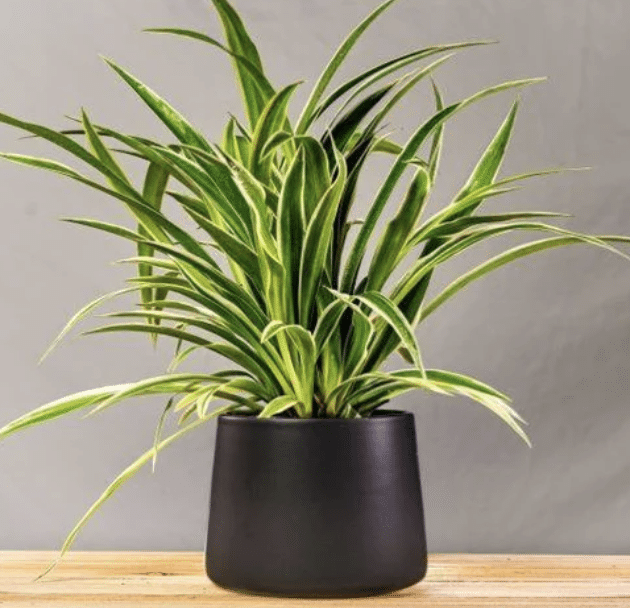
- Other Name: Chlorophytum comosum
- Maintenance Tips: Grows best in indirect light; water when the top inch of soil dries out.
- Possible Allergies: Considered allergy-friendly and safe for most homes.
- Pet Safety: Non-toxic to cats and dogs, but may cause mild digestive upset if ingested in large amounts.
- Seasonal Care: Reduce watering in winter, and move to a brighter spot during darker months for optimal growth.
Areca Palm
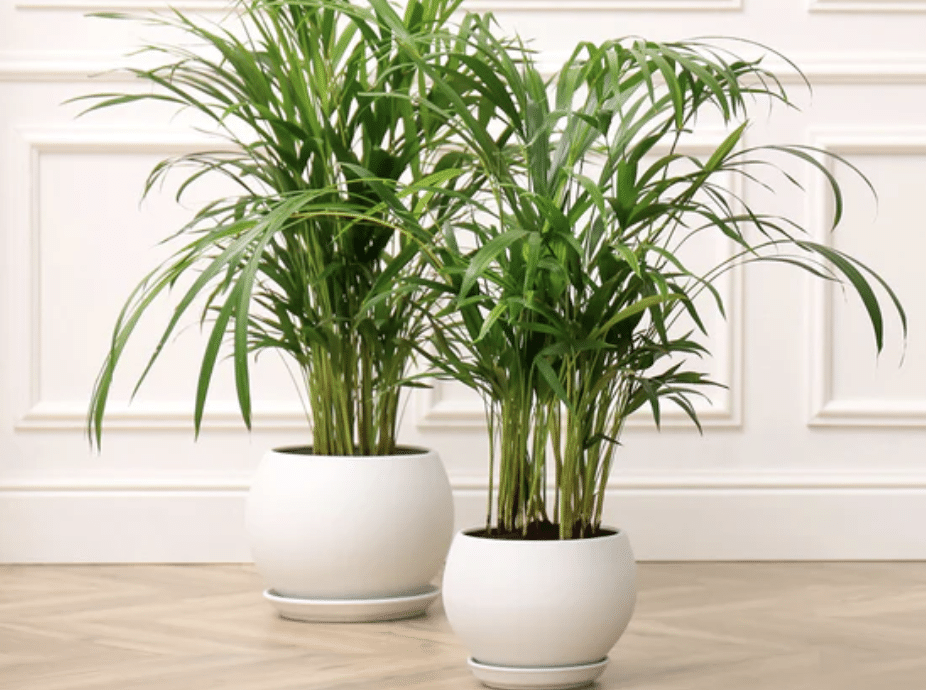
- Other Name: Dypsis lutescens
- Maintenance Tips: Needs bright, indirect sunlight; water when the top soil feels dry, but do not allow it to sit in water.
- Possible Allergies: Low-risk for allergies.
- Pet Safety: Non-toxic to pets, making it safe for cats and dogs.
- Seasonal Care: Reduce watering in winter; ensure higher humidity levels by misting during drier months.
Chinese Evergreen
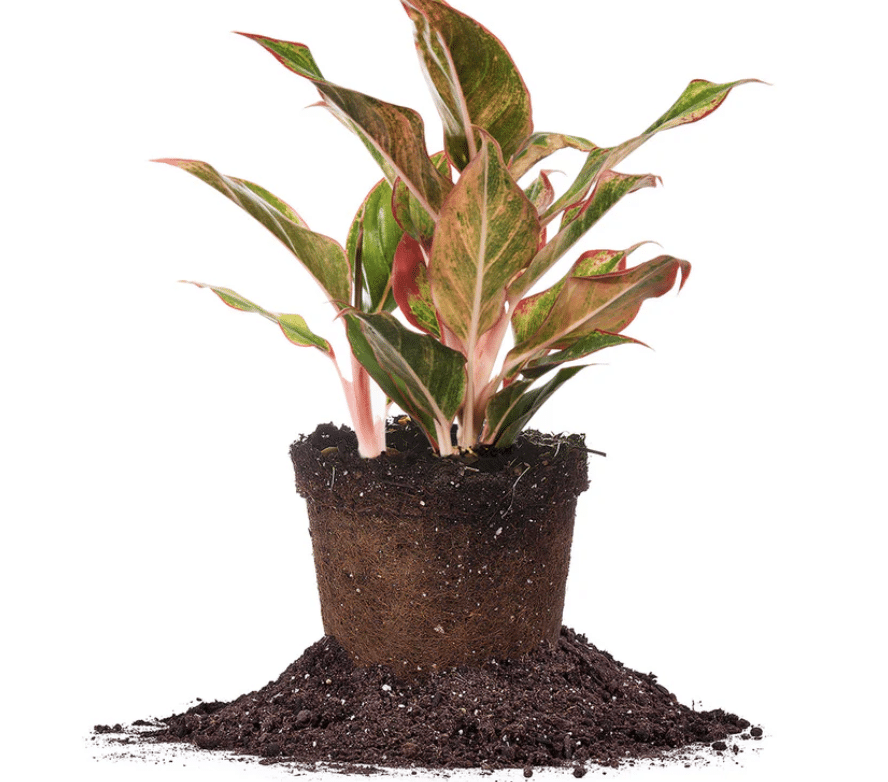
- Other Name: Aglaonema
- Maintenance Tips: Prefers low to medium light; water moderately when the soil feels dry to touch.
- Possible Allergies: Sap may cause skin irritation; avoid direct contact.
- Pet Safety: Toxic to cats and dogs if ingested, can cause swelling and pain in the mouth.
- Seasonal Care: Reduce watering in winter, and mist leaves during dry months to increase humidity.
Ponytail Palm Tree
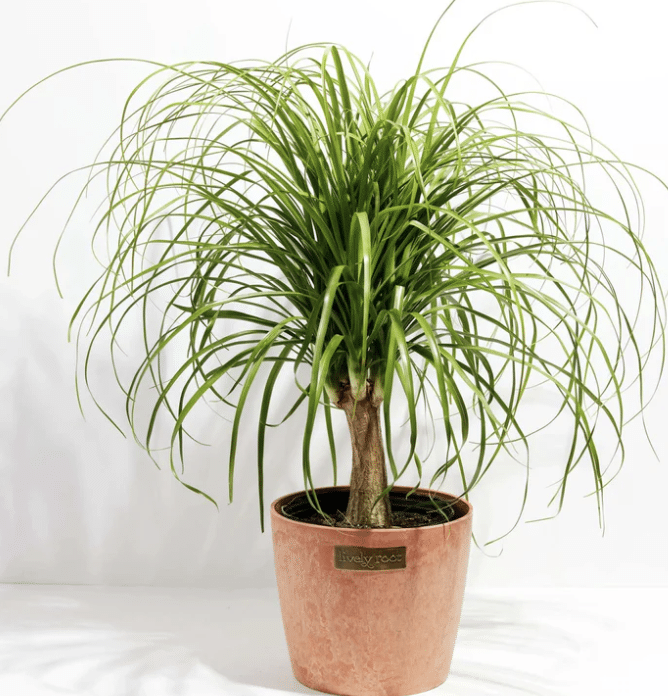
- Other Name: Beaucarnea recurvata
- Maintenance Tips: Needs bright, indirect light; water sparingly as it stores water in its trunk.
- Possible Allergies: Allergy-friendly and generally safe for sensitive individuals.
- Pet Safety: Non-toxic to cats and dogs, safe for households with pets.
- Seasonal Care: Water less during winter months and ensure it receives enough light for healthy growth.
Split-Leaf Philodendron
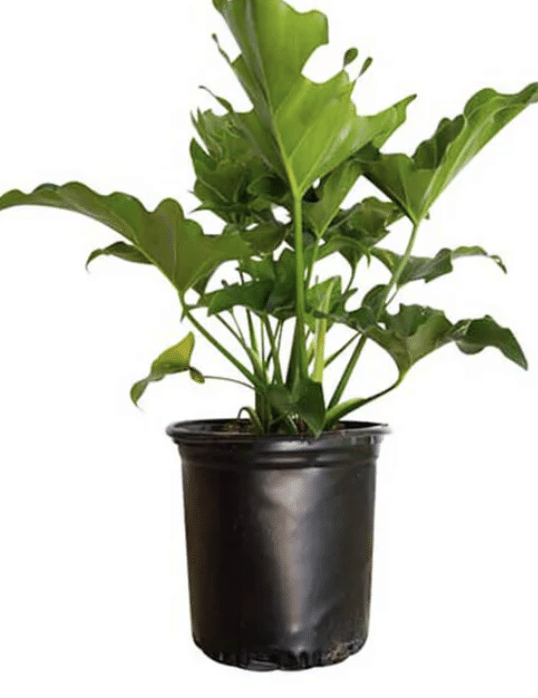
- Other Name: Monstera deliciosa
- Maintenance Tips: Requires bright, indirect light; water when the top inch of soil is dry.
- Possible Allergies: Can cause mild skin irritation from sap.
- Pet Safety: Toxic to cats and dogs if ingested, can cause oral irritation and swelling.
- Seasonal Care: Reduce watering in winter; keep humidity high by misting during drier months.
Air Plant
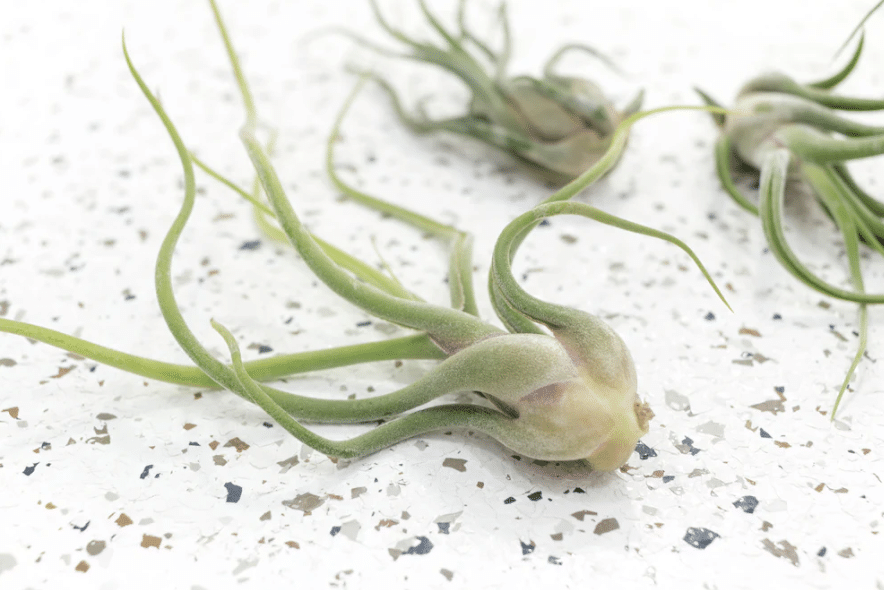
- Other Name: Tillandsia
- Maintenance Tips: Doesn’t need soil; soak in water for 20-30 minutes every one to two weeks, then allow to dry.
- Possible Allergies: Generally safe and allergy-friendly.
- Pet Safety: Non-toxic to pets, making it safe for cats and dogs.
- Seasonal Care: In winter, increase misting to maintain humidity as indoor heating can dry out the plant.
Red Leaf Dragon Plant
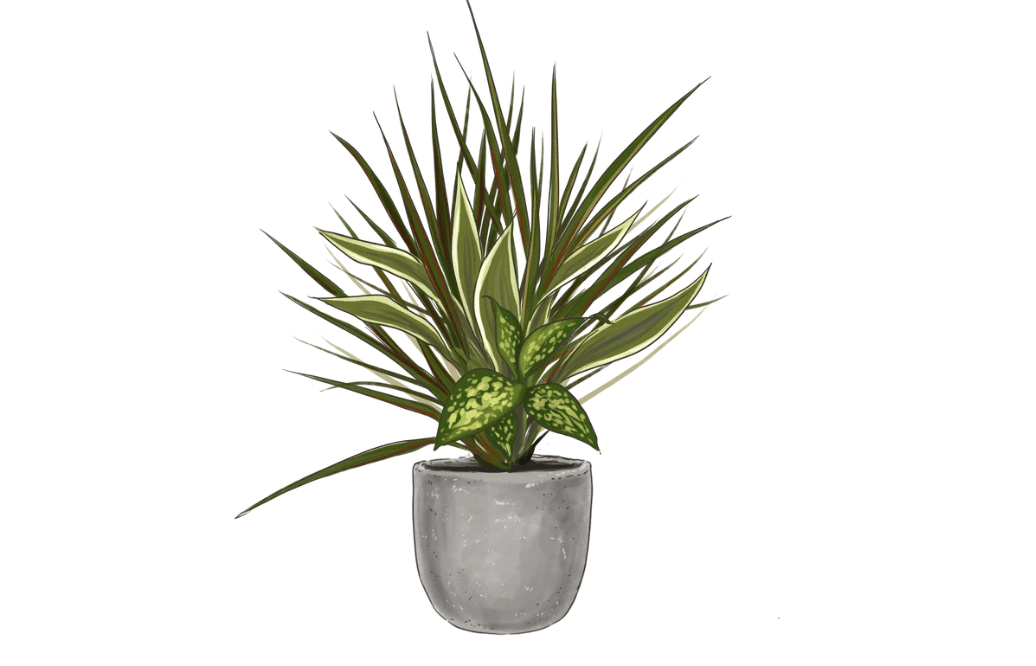
- Other Name: Dracaena marginata
- Maintenance Tips: Prefers bright, indirect light; water when the top half of soil is dry, but avoid overwatering.
- Possible Allergies: Can cause skin irritation from sap.
- Pet Safety: Toxic to pets if ingested, can cause vomiting and drooling in cats and dogs.
- Seasonal Care: Water less frequently in winter, and ensure humidity is maintained with occasional misting.
Tips for Keeping Indoor Bedroom Plants Healthy
- Check the soil before watering. Most plants like to dry out a bit between drinks.
- Make sure your plants get the right amount of light. Too much or too little can stress them out.
- Clean leaves with a damp cloth. This helps plants breathe and soak up light better.
- Most plants like it between 60-75°F. Keep them away from cold drafts or hot radiators.
- Remove dead or yellow leaves. This keeps your plant looking good and helps it stay healthy.
- Different plants need different types of soil. Make sure you’re using the best mix for each plant.
- Plants get used to their spot. Try not to move them unless you really need to.
- Look at leaves and stems often. Catching bugs early makes them easier to deal with.
- Don’t crowd your plants. They need room to grow and get air flow.
- A little food is good, but too much can harm your plants. Less is often more.
Wrapping It Up
Adding low-maintenance plants to your bedroom is a simple way to make your space more inviting and healthy.
We’ve shown you some spots to place your bedroom plants as well as how easy it can be to care for these green friends, even in low-light conditions.
Remember, the key is choosing the right plants and giving them just enough attention. With a bit of practice, you’ll soon find a routine that works for both you and your new leafy roommates.
Why not start small with one or two plants? As you get more comfortable, you can slowly add more to create your own indoor oasis.
Your bedroom will feel fresher, look better, and you might even sleep more soundly.
So go ahead, bring a little bit of nature indoors and enjoy the benefits of a greener, more peaceful bedroom.

